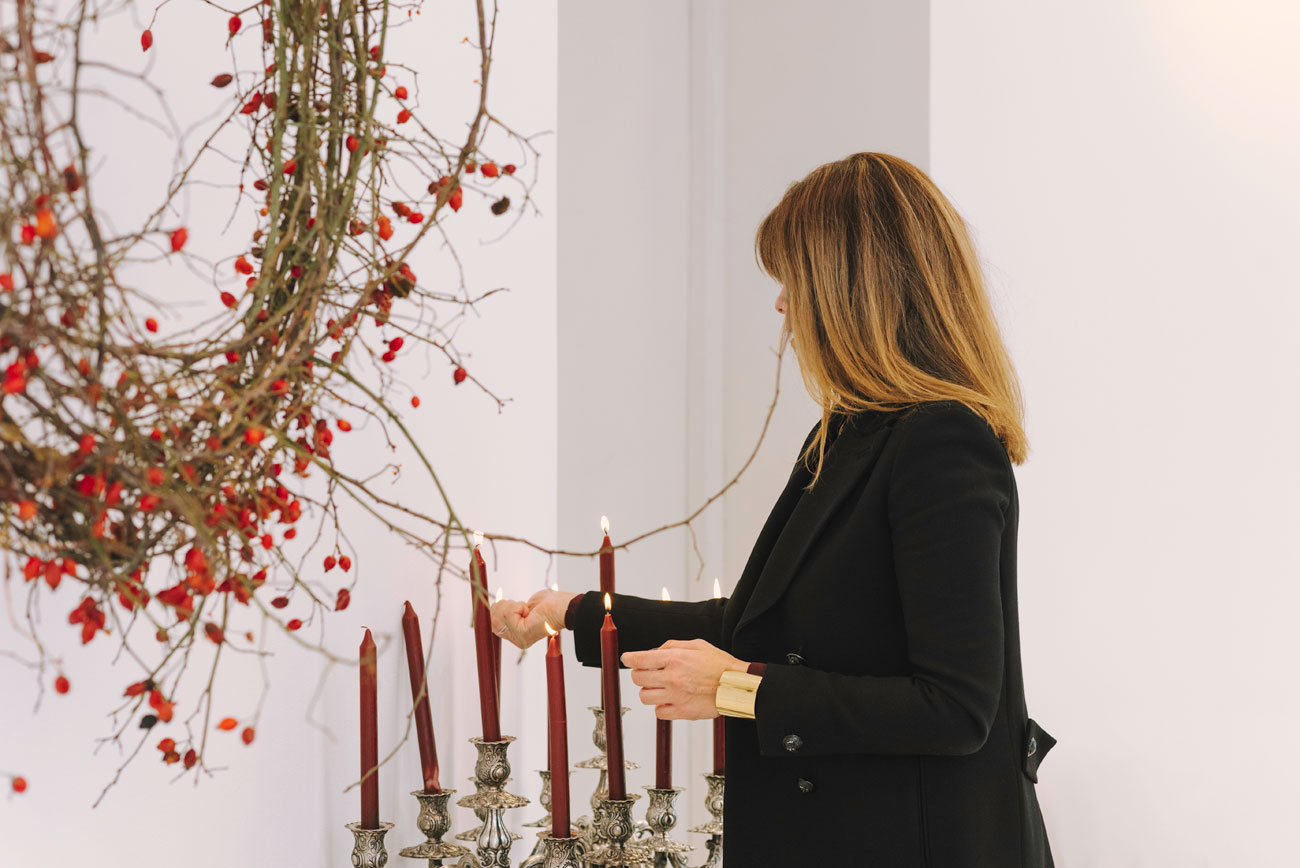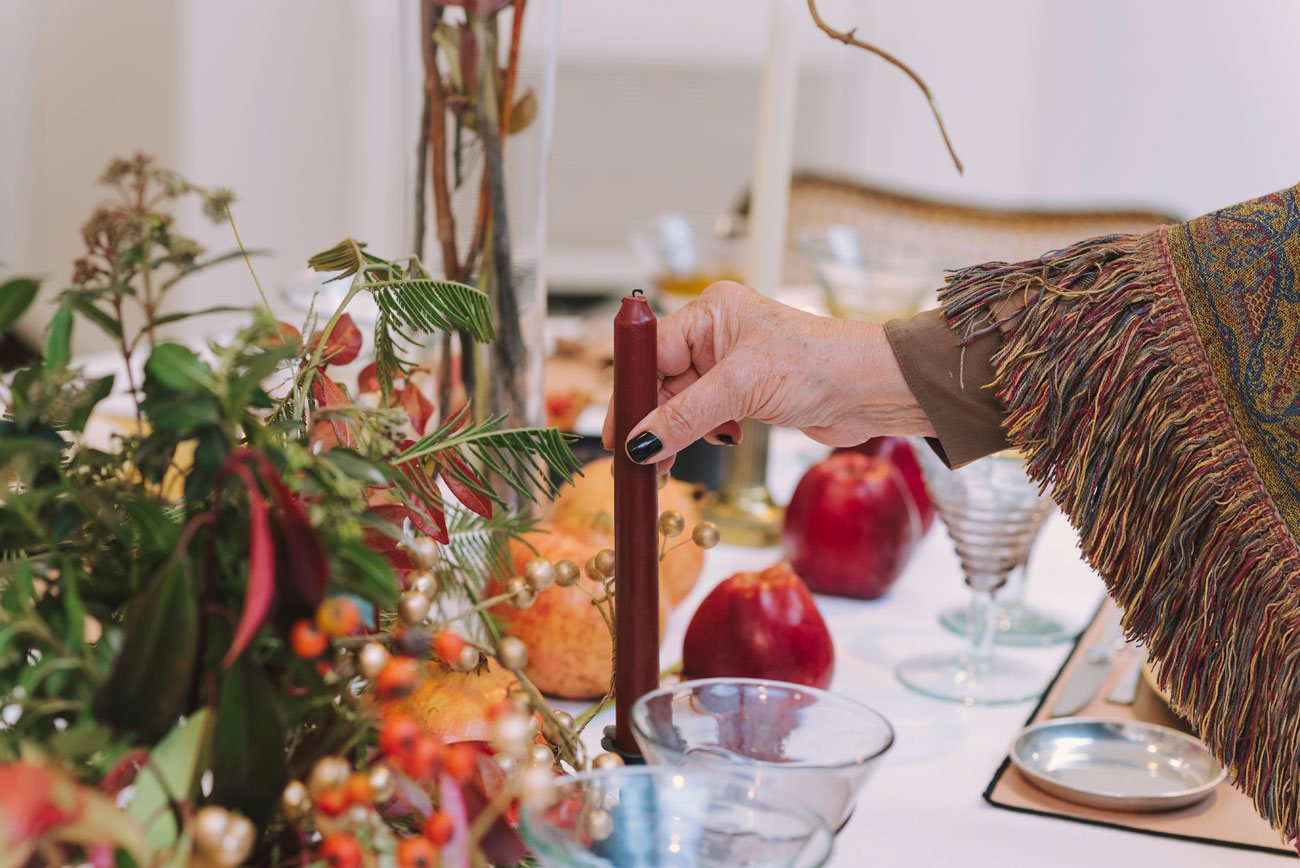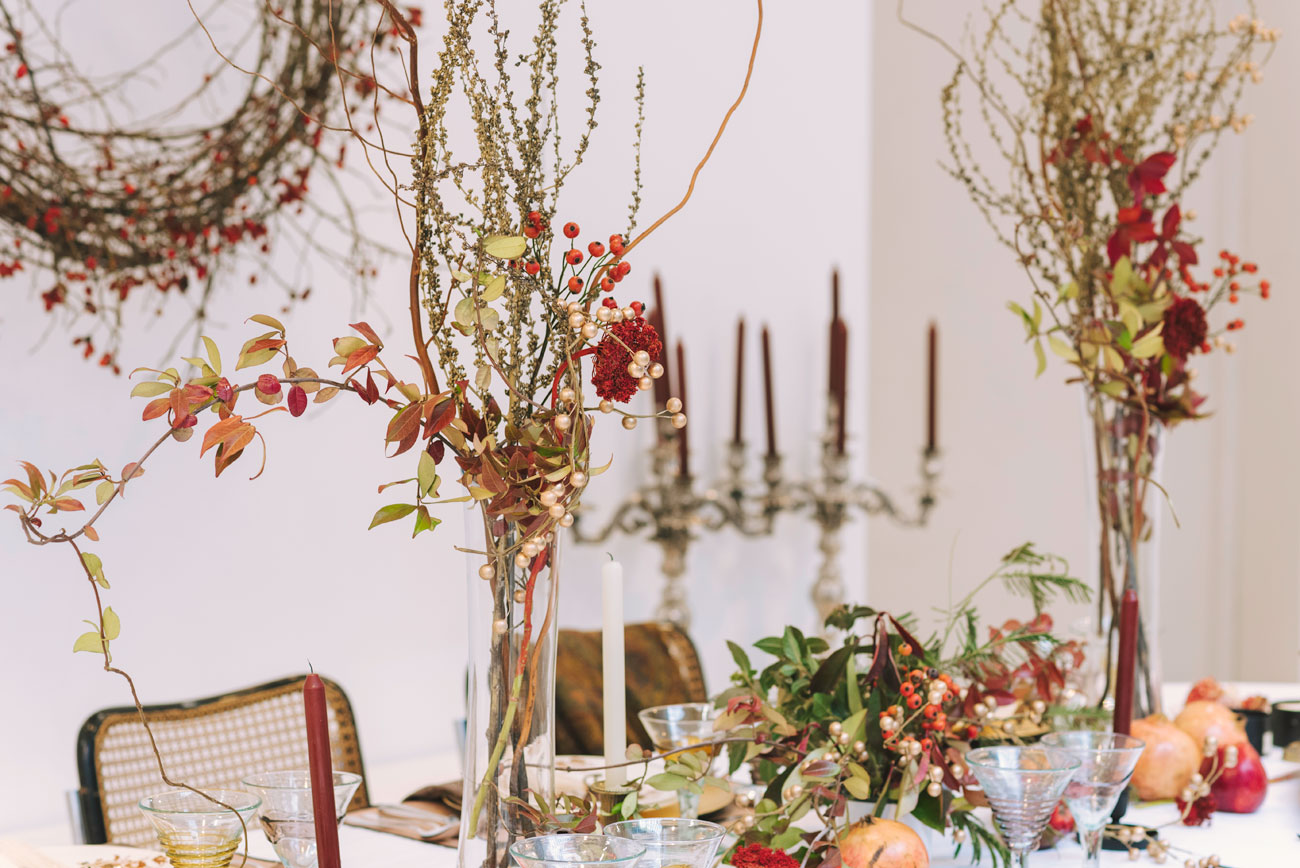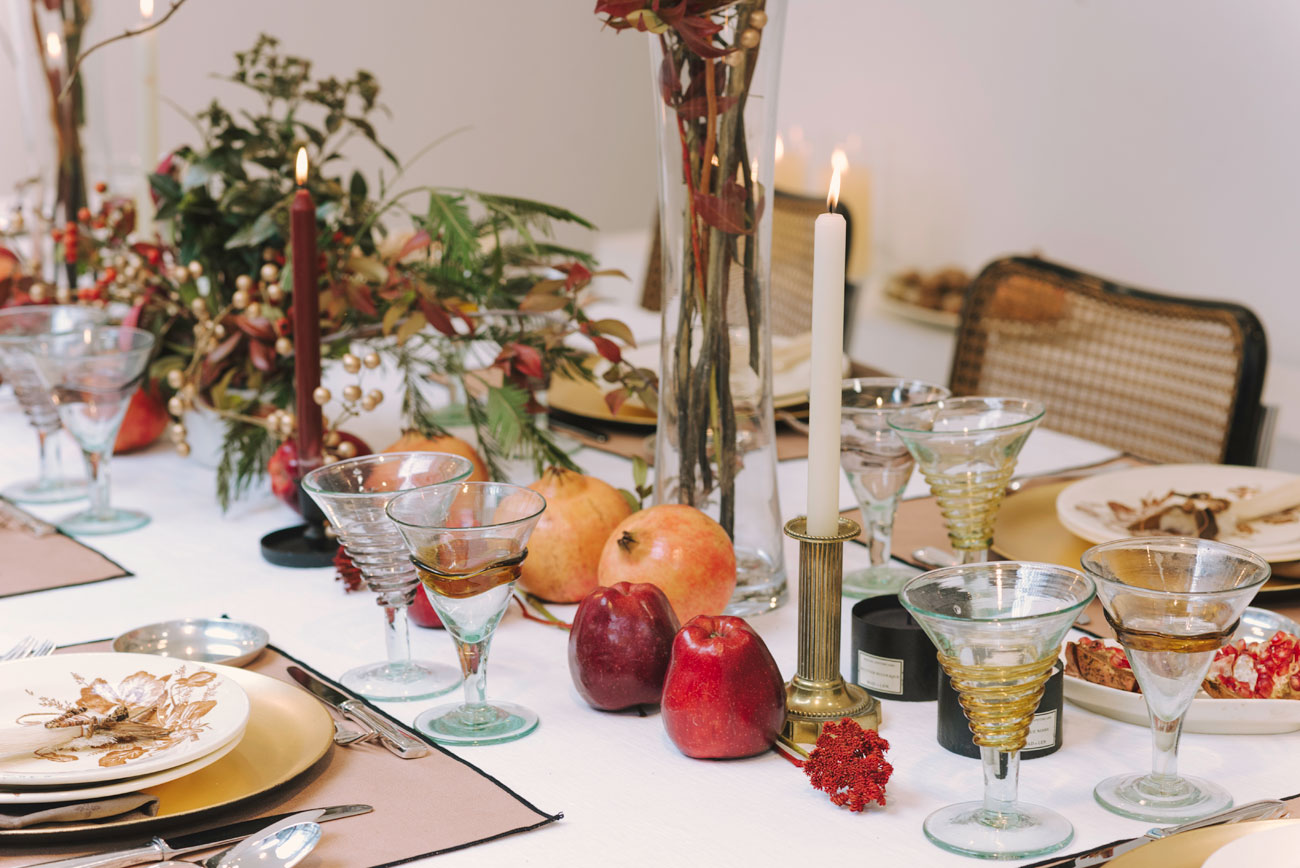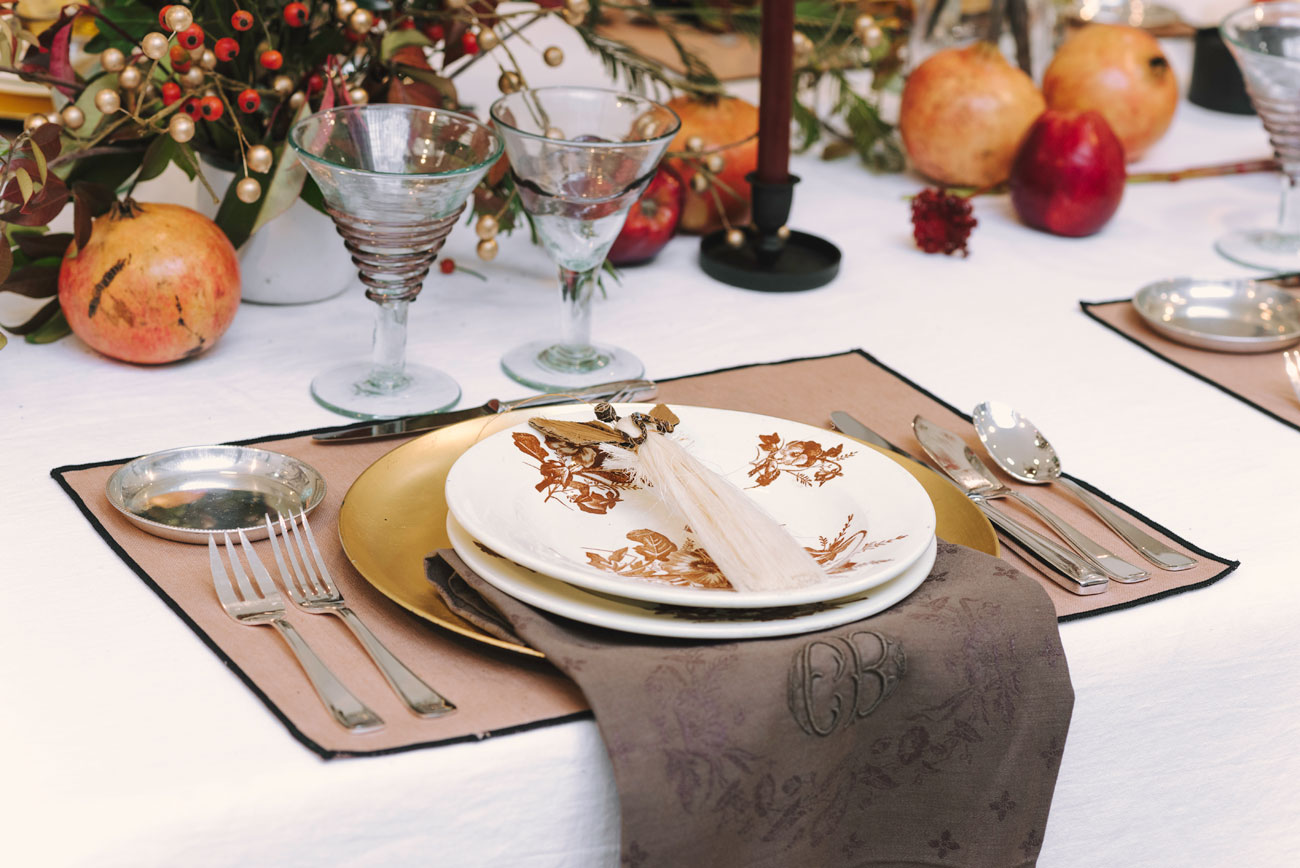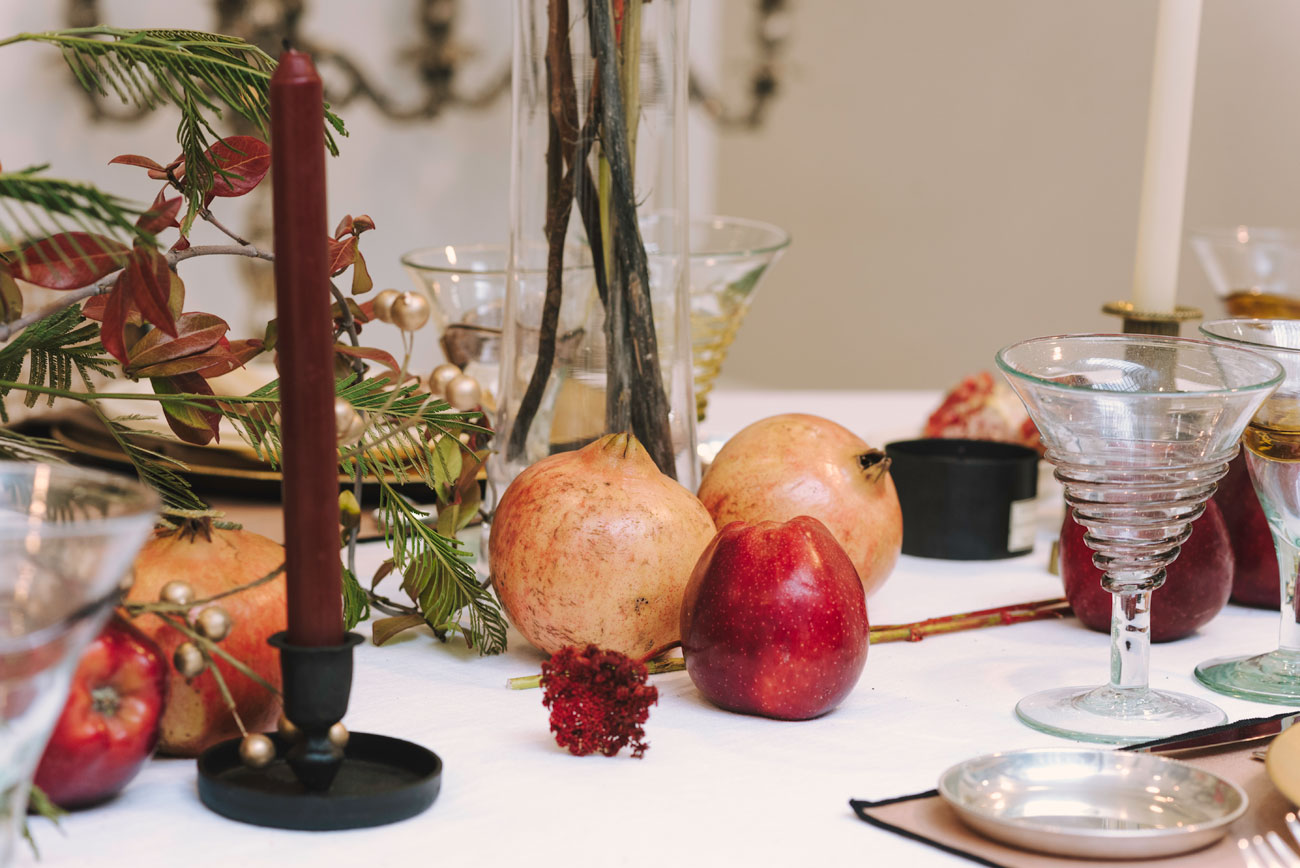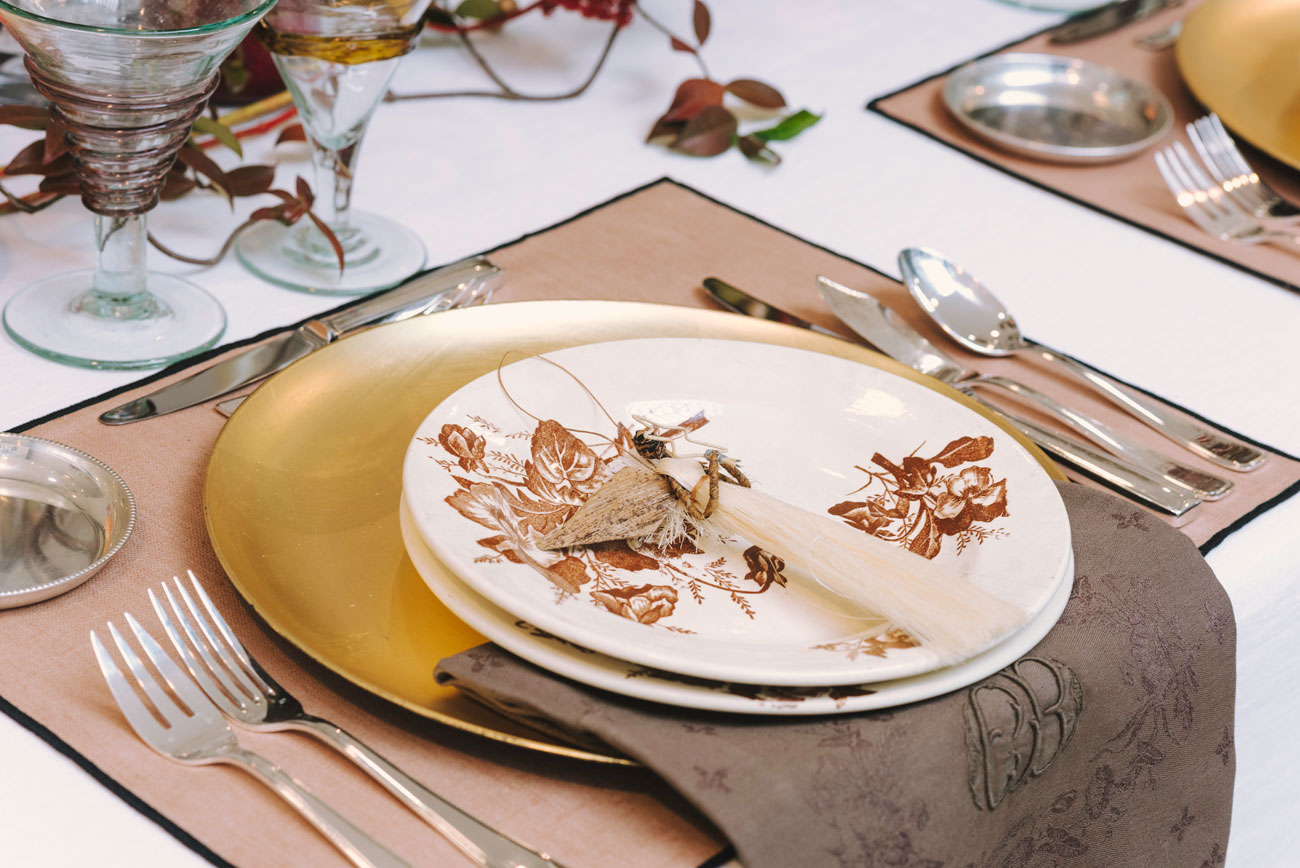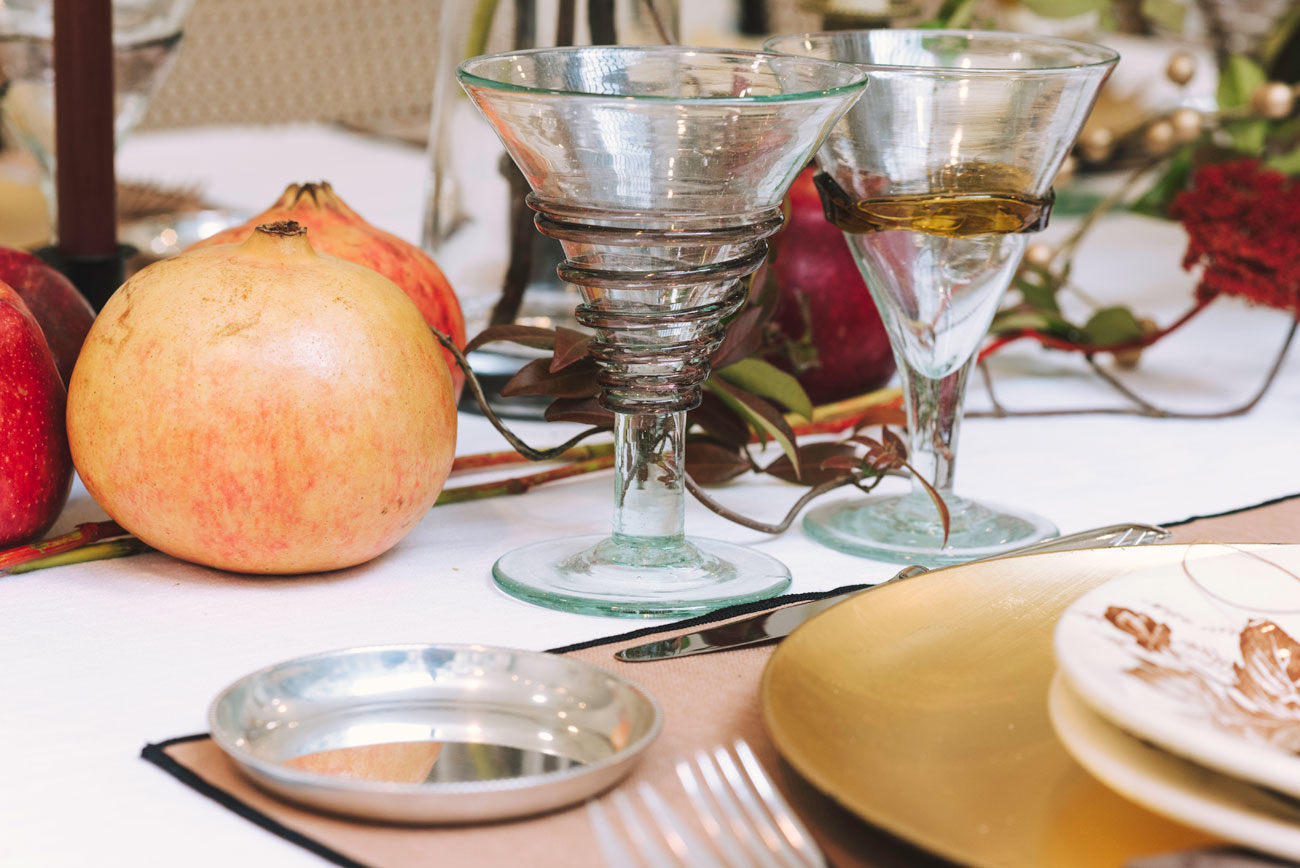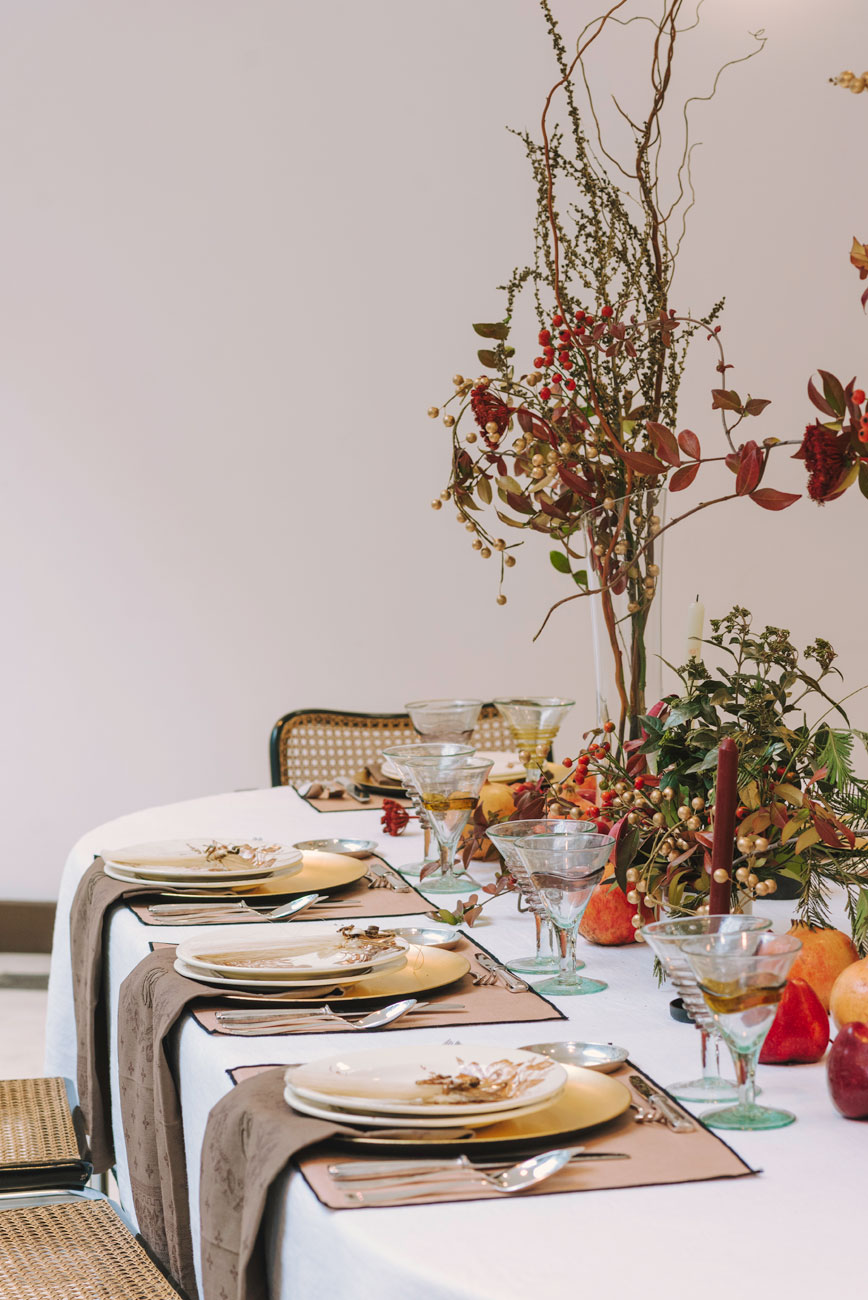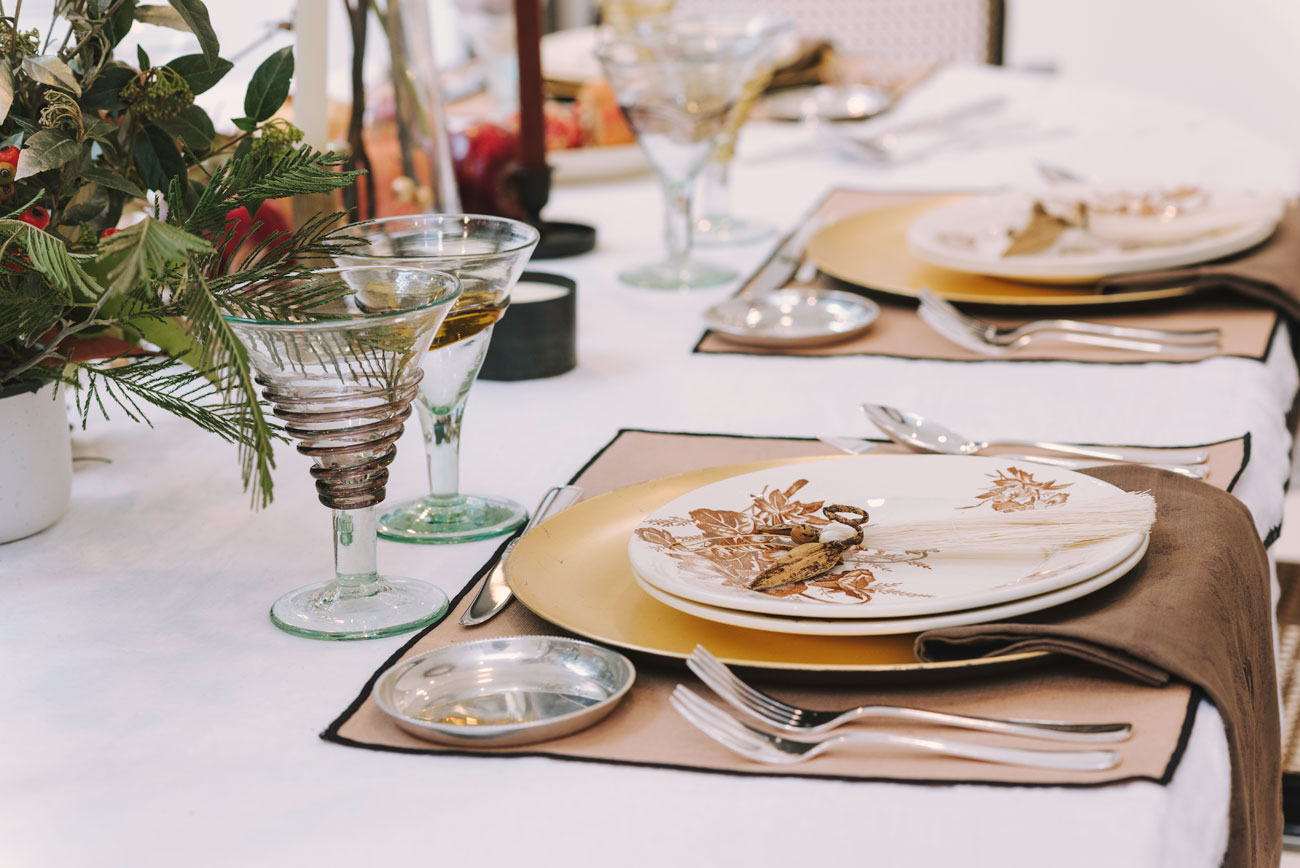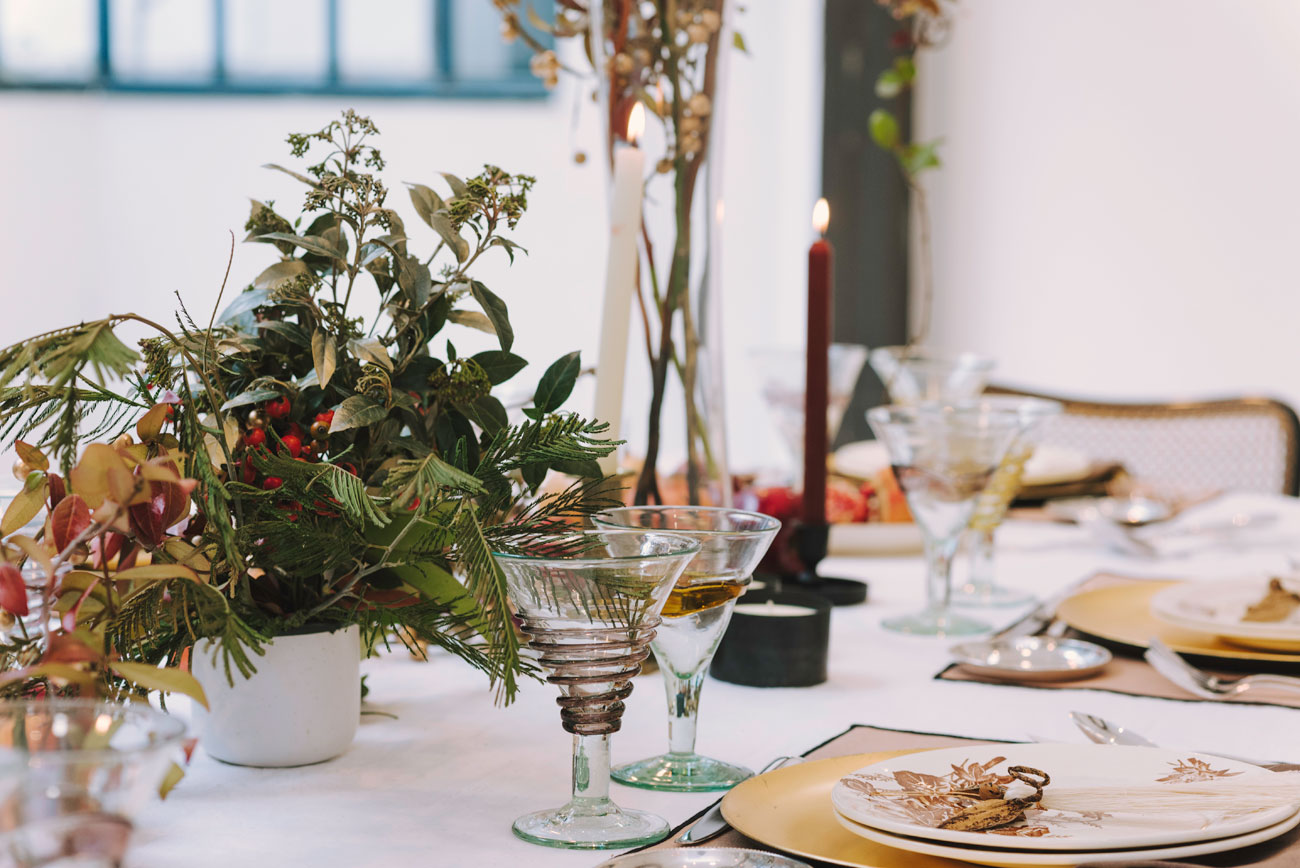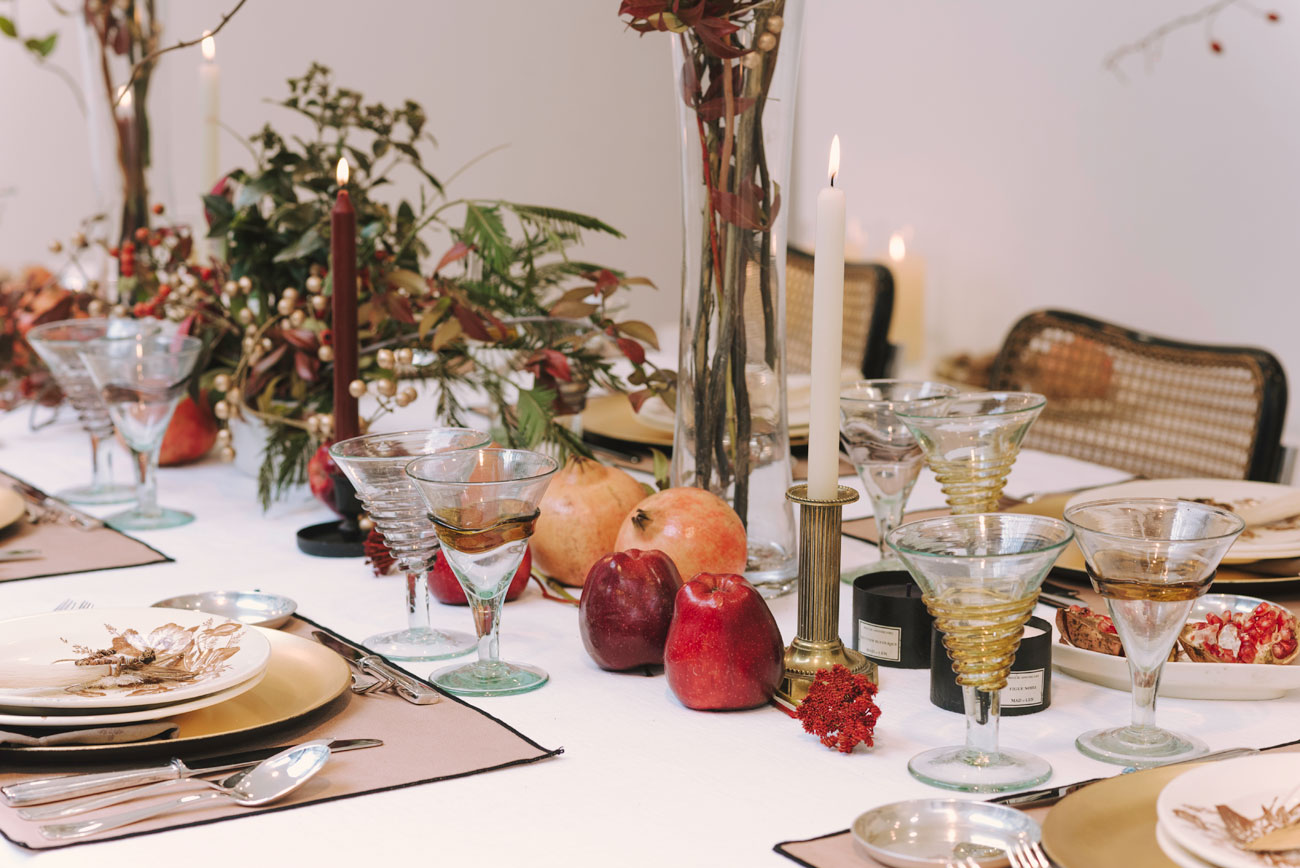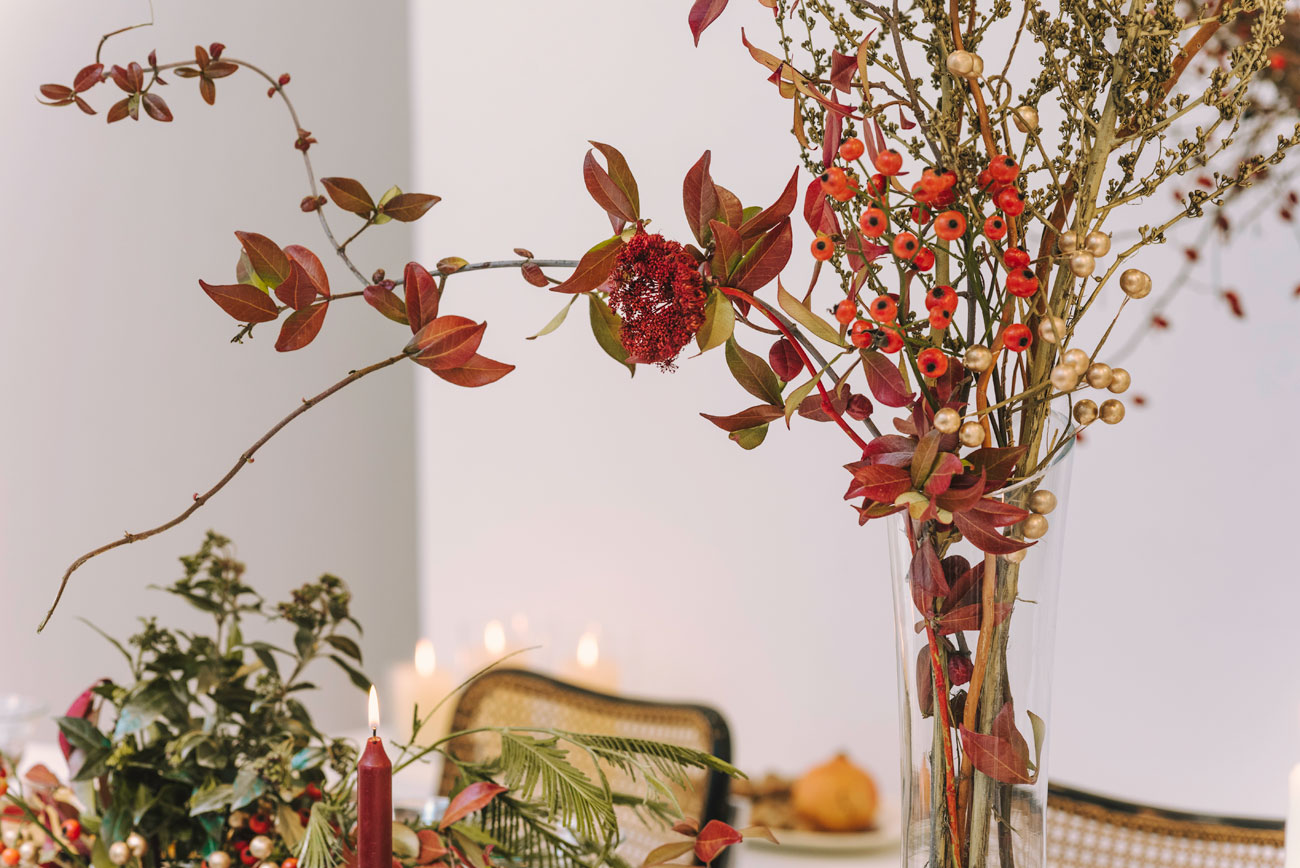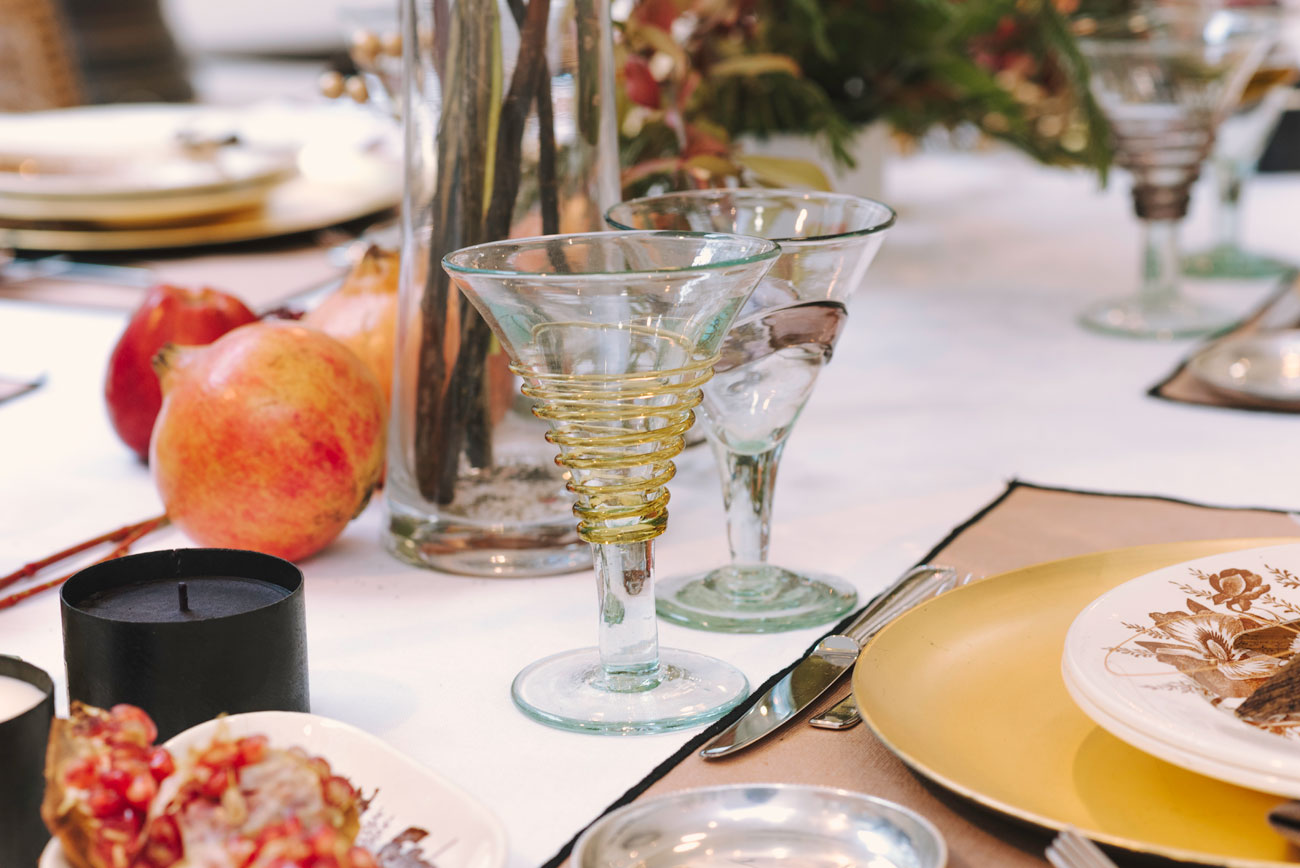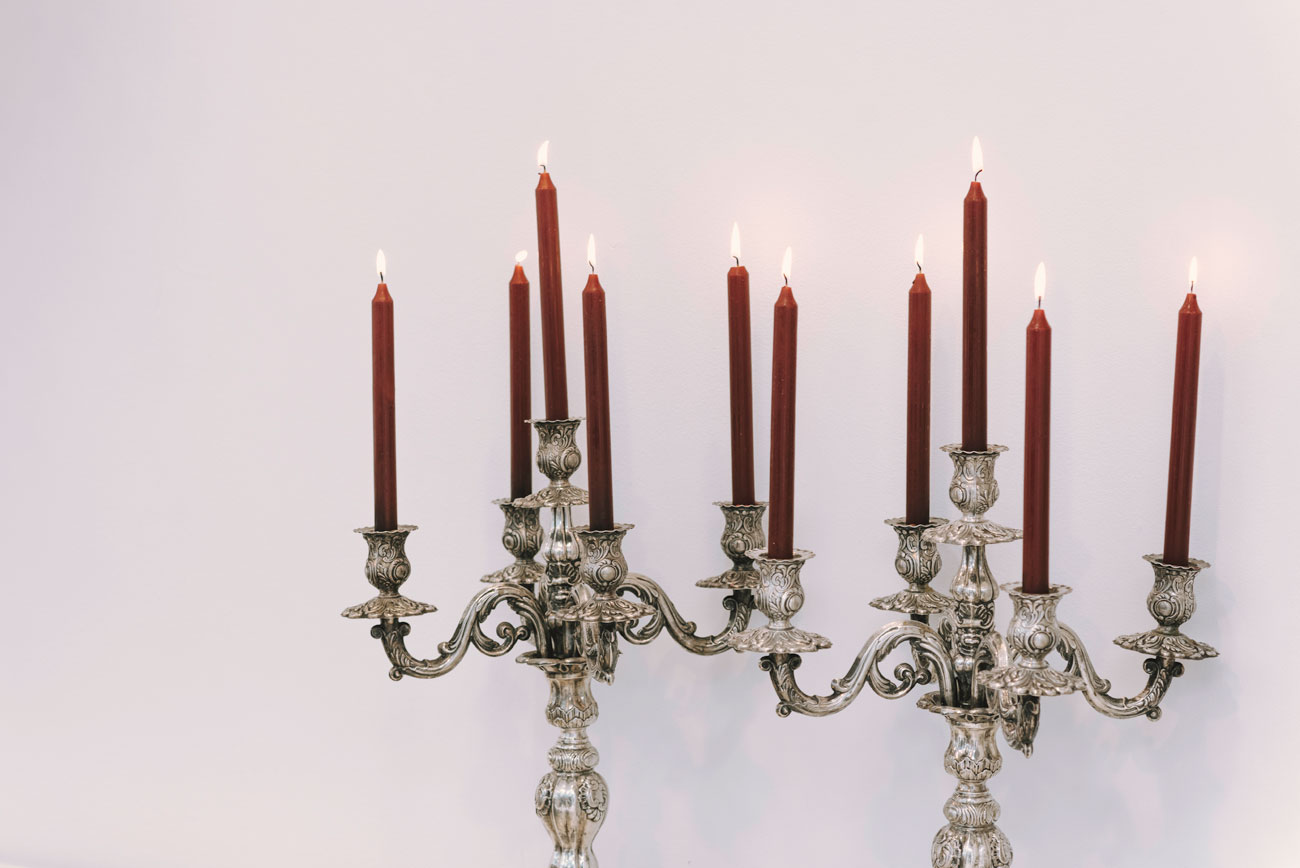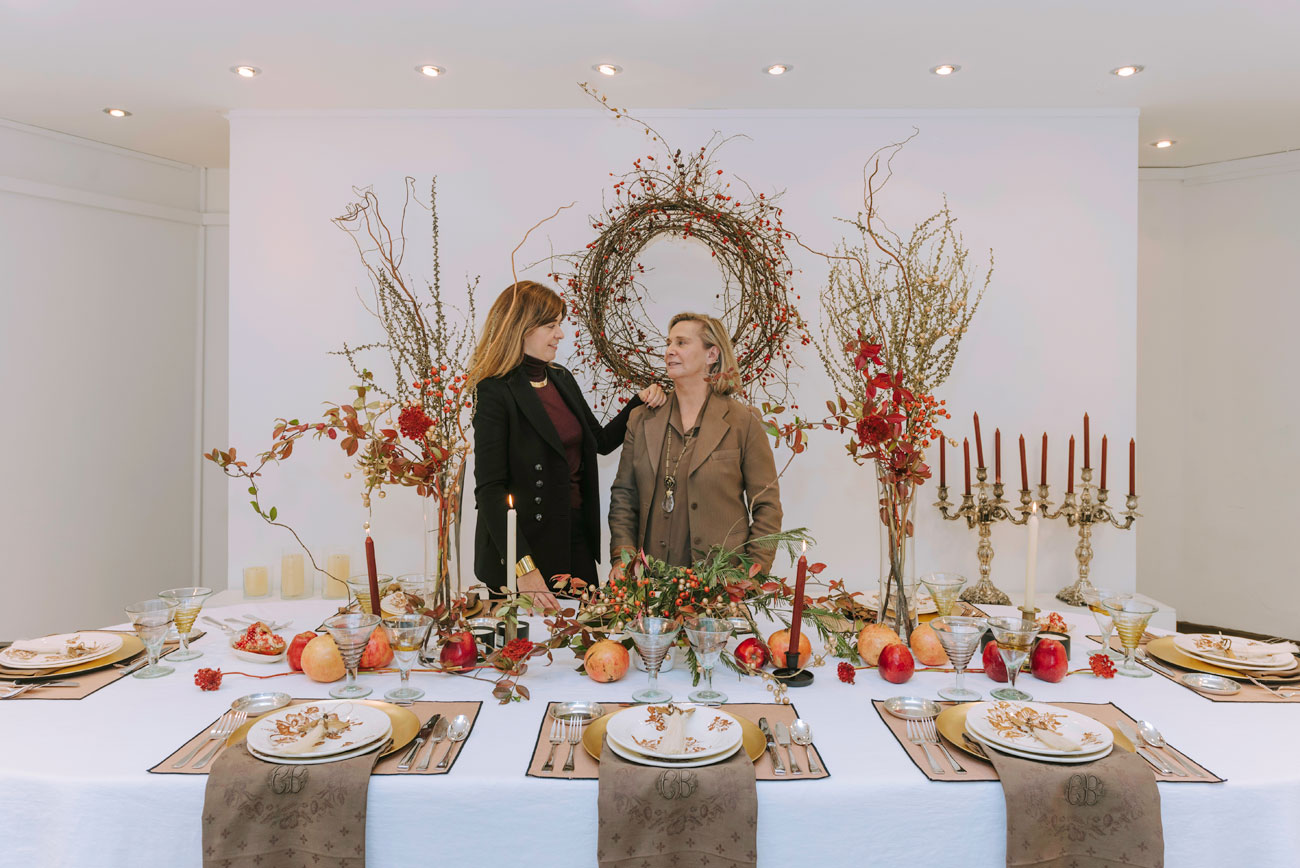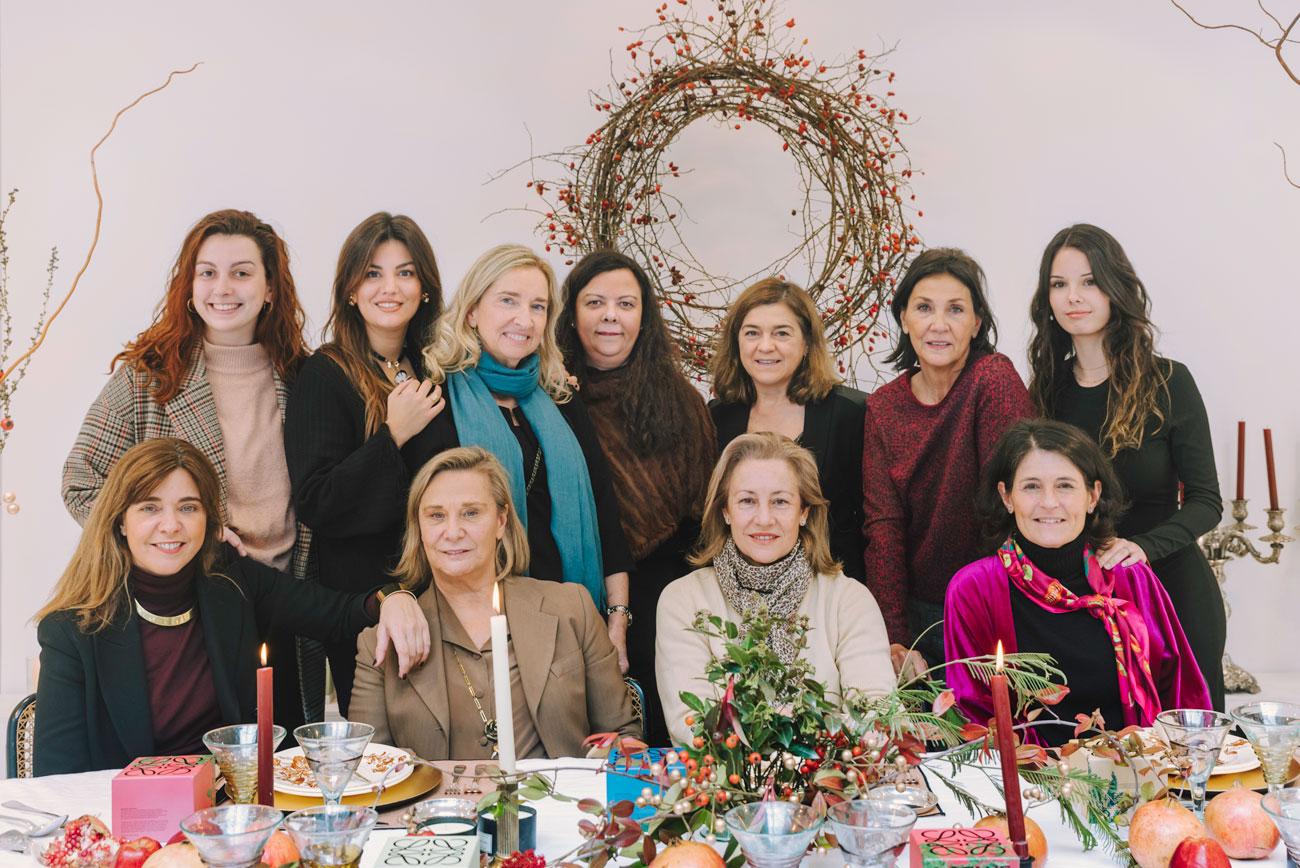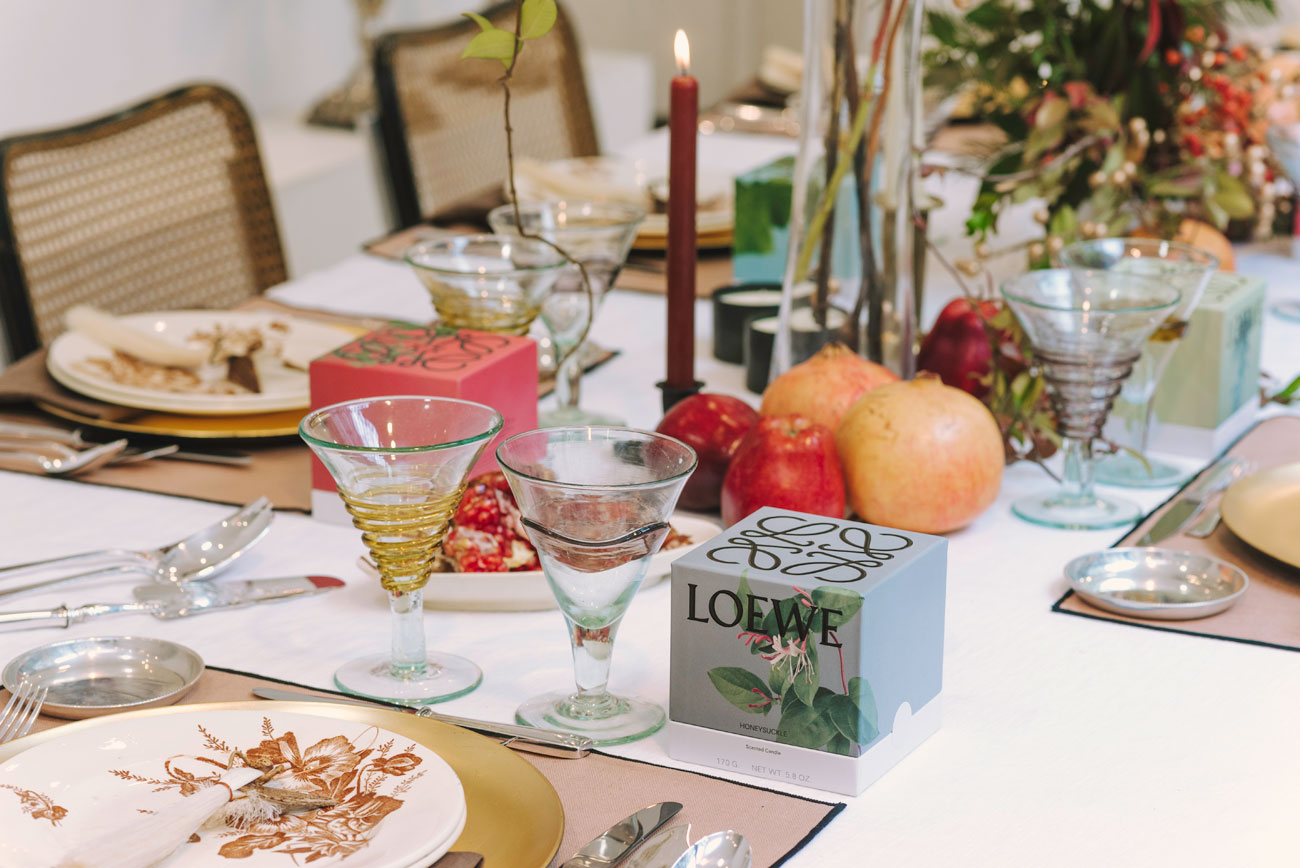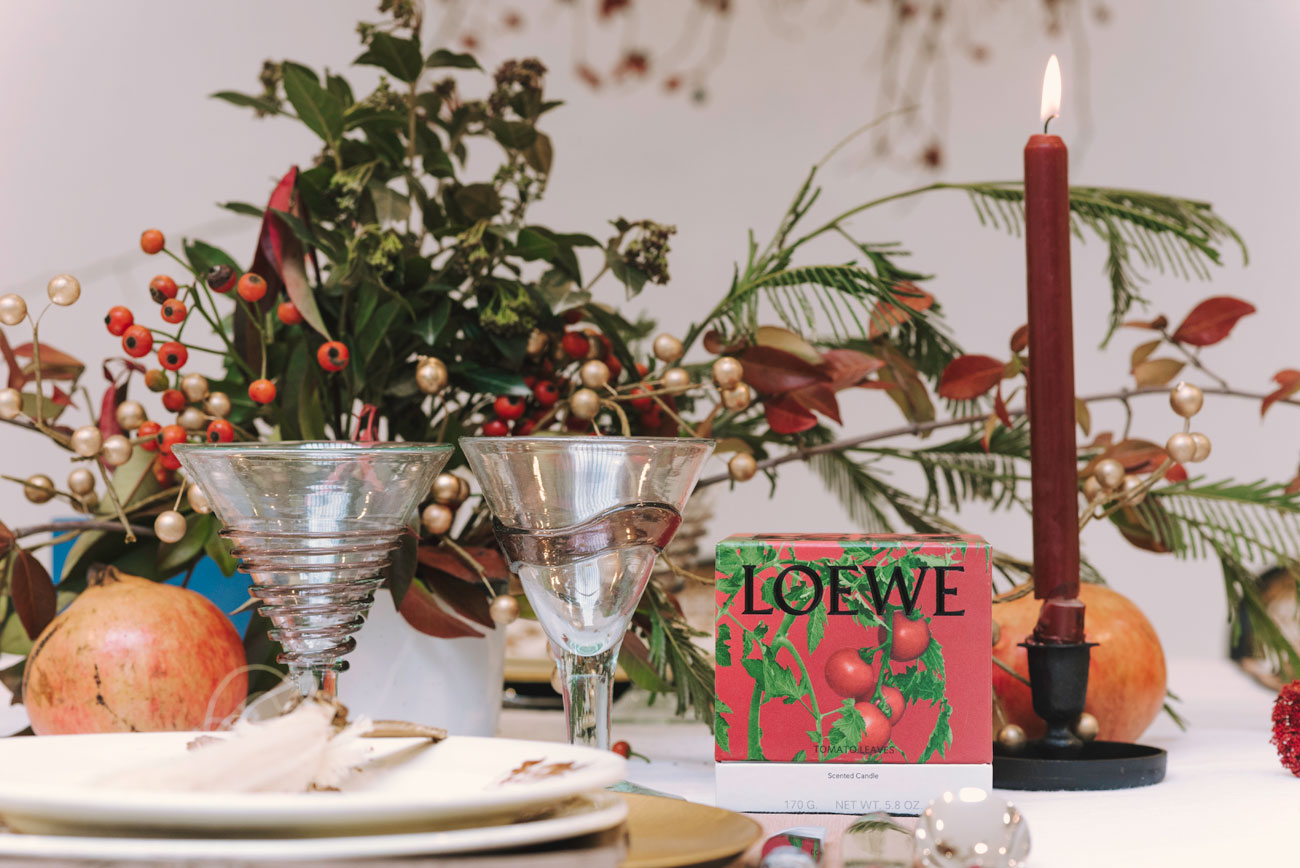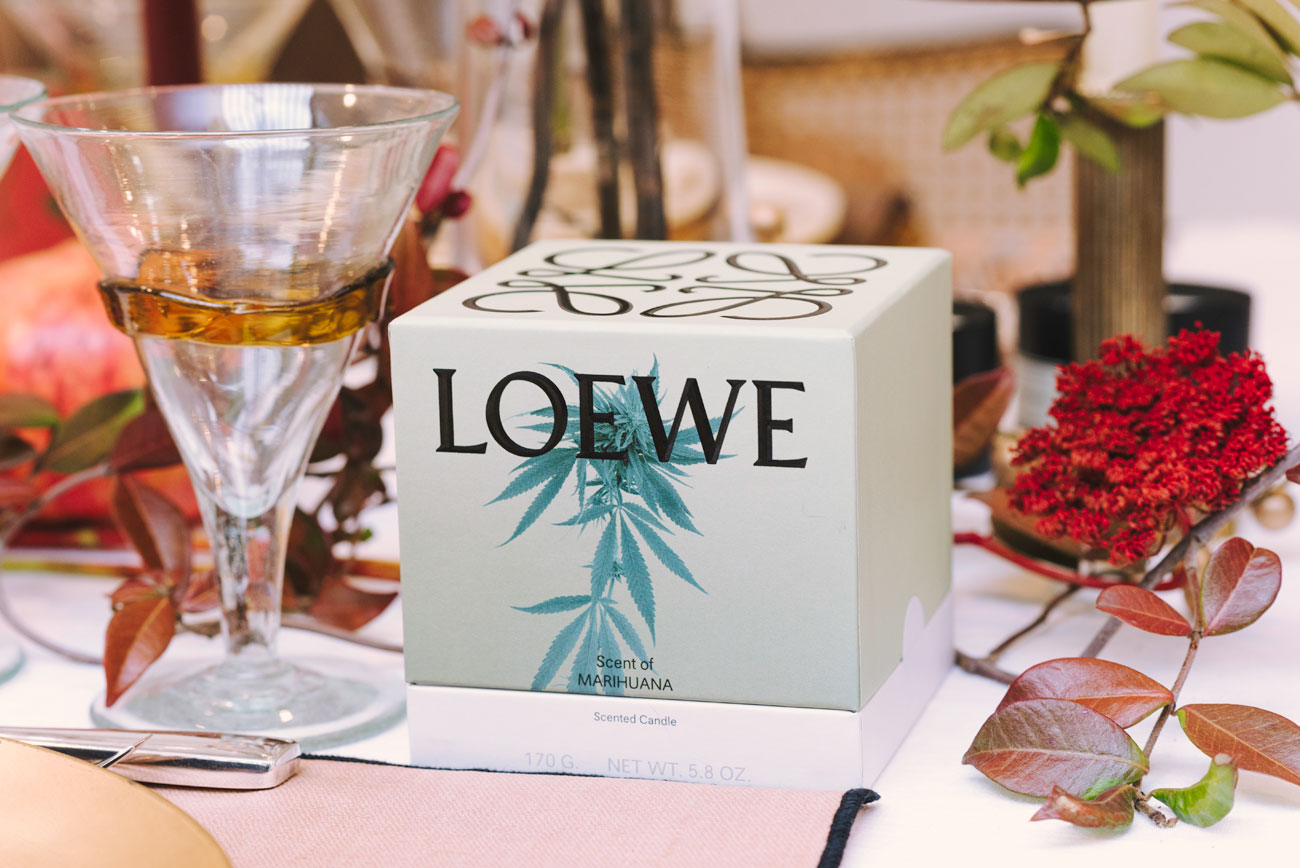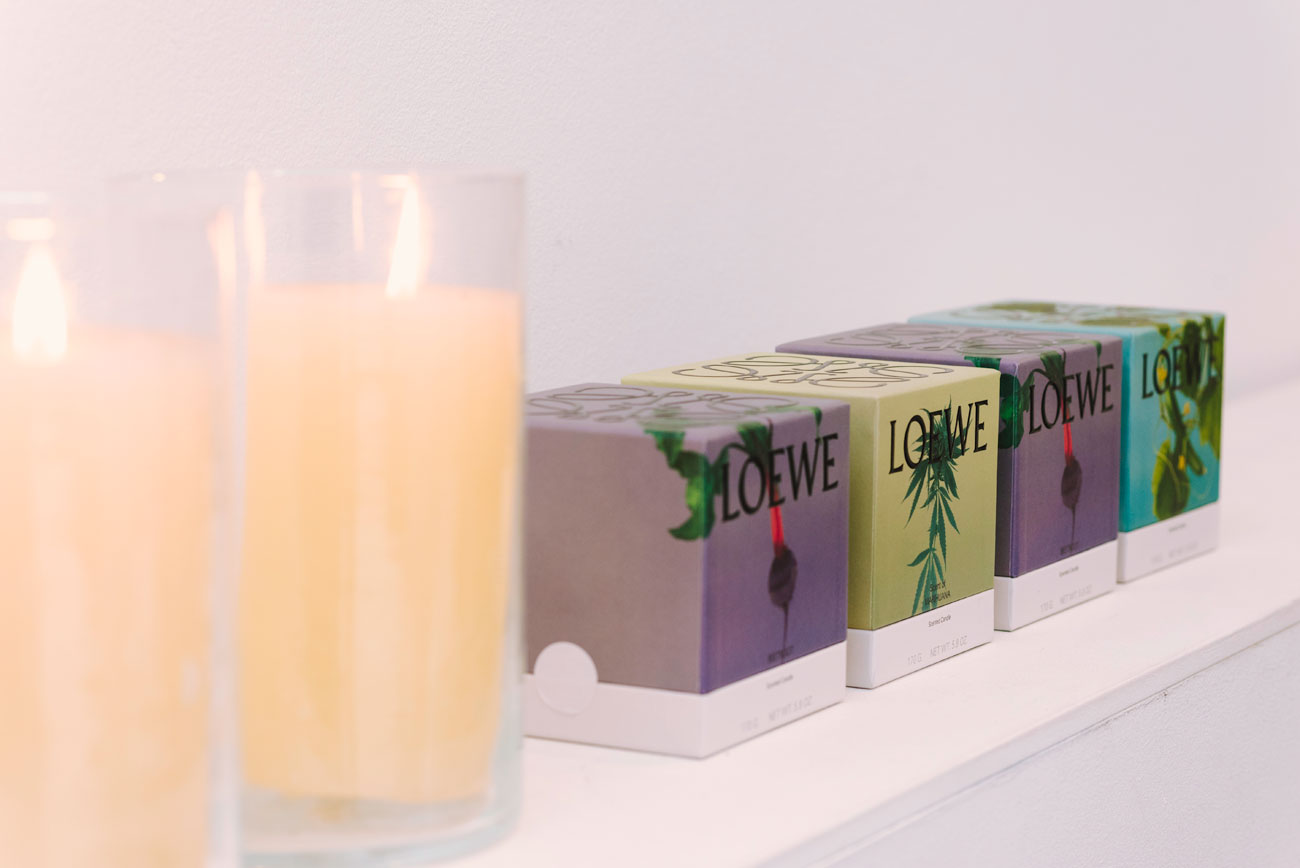The Sibarist gets ready to celebrate Christmas with a special Christmas table
We are getting ready to celebrate Christmas, and as is now a tradition, The Sibarist takes us to one of its spaces: El Invernadero where Sylvia Girón, interior designer and founding partner of the company, inspires us with her table proposal, offering us suggestions for the most special time of the year. A preparation that has been carefully prepared to the maximum detail to share with our readers, followers, clients and the whole team. For this occasion, she has counted on the special collaboration of Rue Vintage, Isita Home and Leticia Rodríguez de la Fuente.
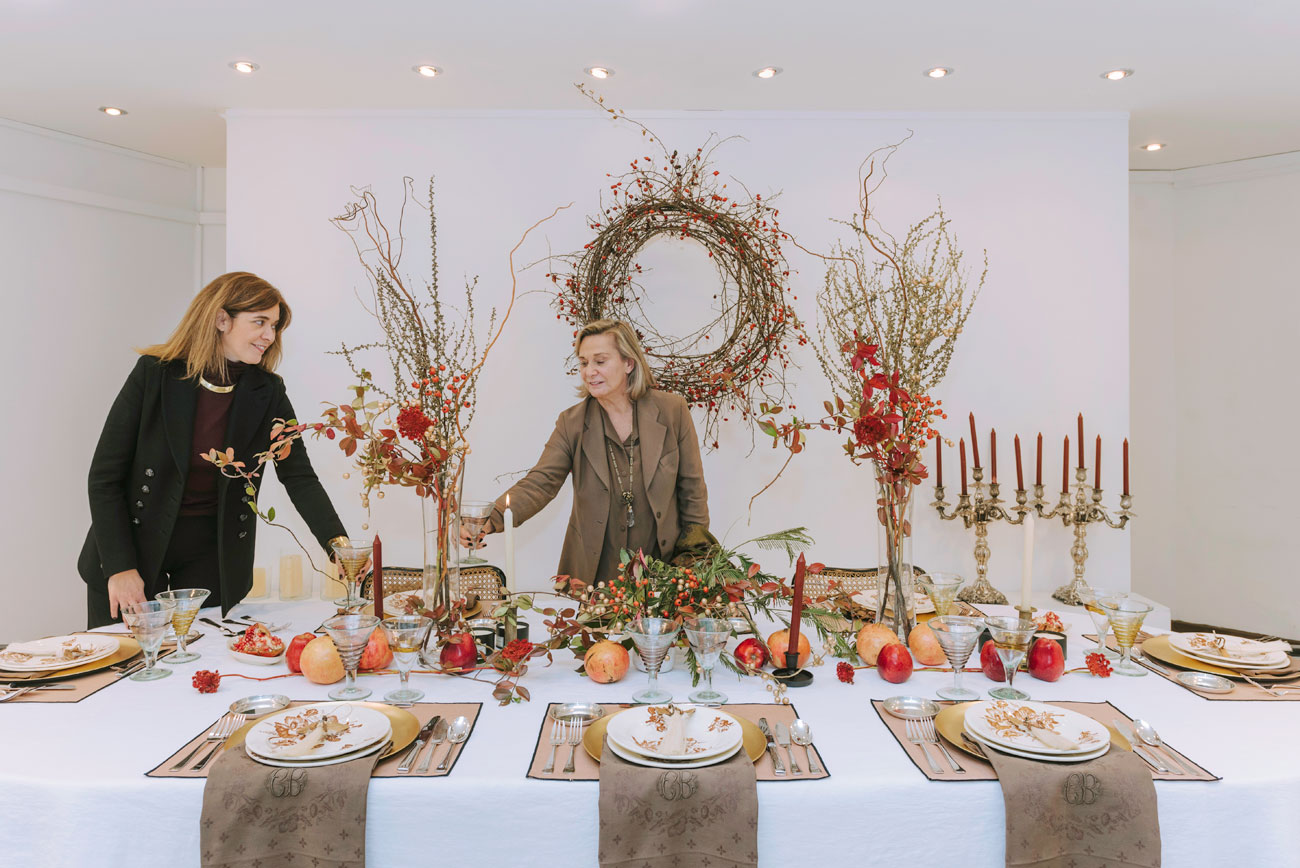
In the art of welcoming, you can’t miss a good table and what better time than Christmas to put more focus on our homes and welcome the ones we love the most.
We chose El Invernadero as the place to celebrate and for this we start with the exterior, where Leticia Rodríguez de la Fuente proposes a timeless installation, created from the resources offered by her Guadalajara meadow, where her organic flower farm is located. To welcome us, a clump of white gaura stalks, which are still green when in bloom, but in autumn turn into burgundy flames. In contrast to the maroon of the gauras is a group of golden-tinted gall oak branches that climb up the façade like ivy.
The Christmas touch is created by a large wreath of rose hips hung inside, on the central wall of the Orangery, which hangs from the ceiling like a sculpture and presides over the table.
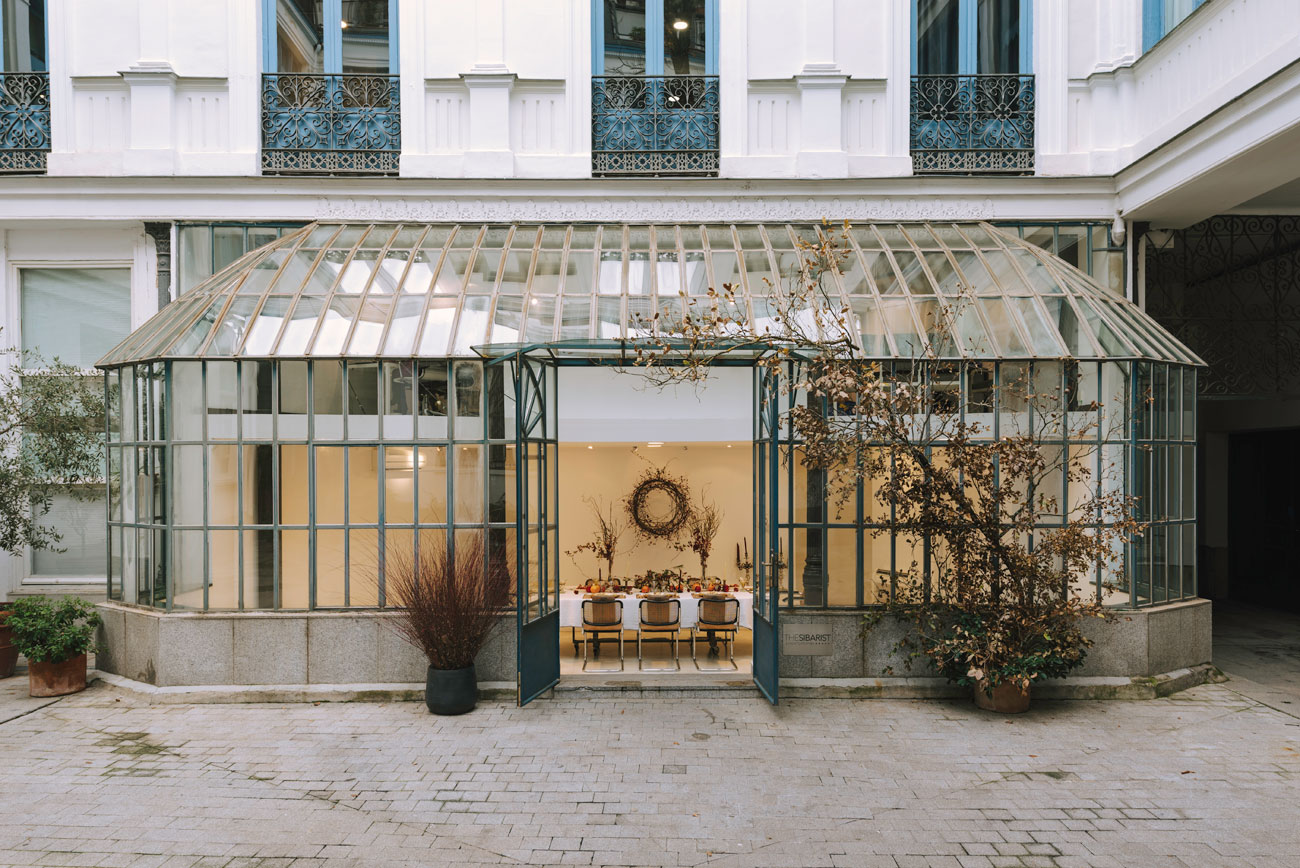
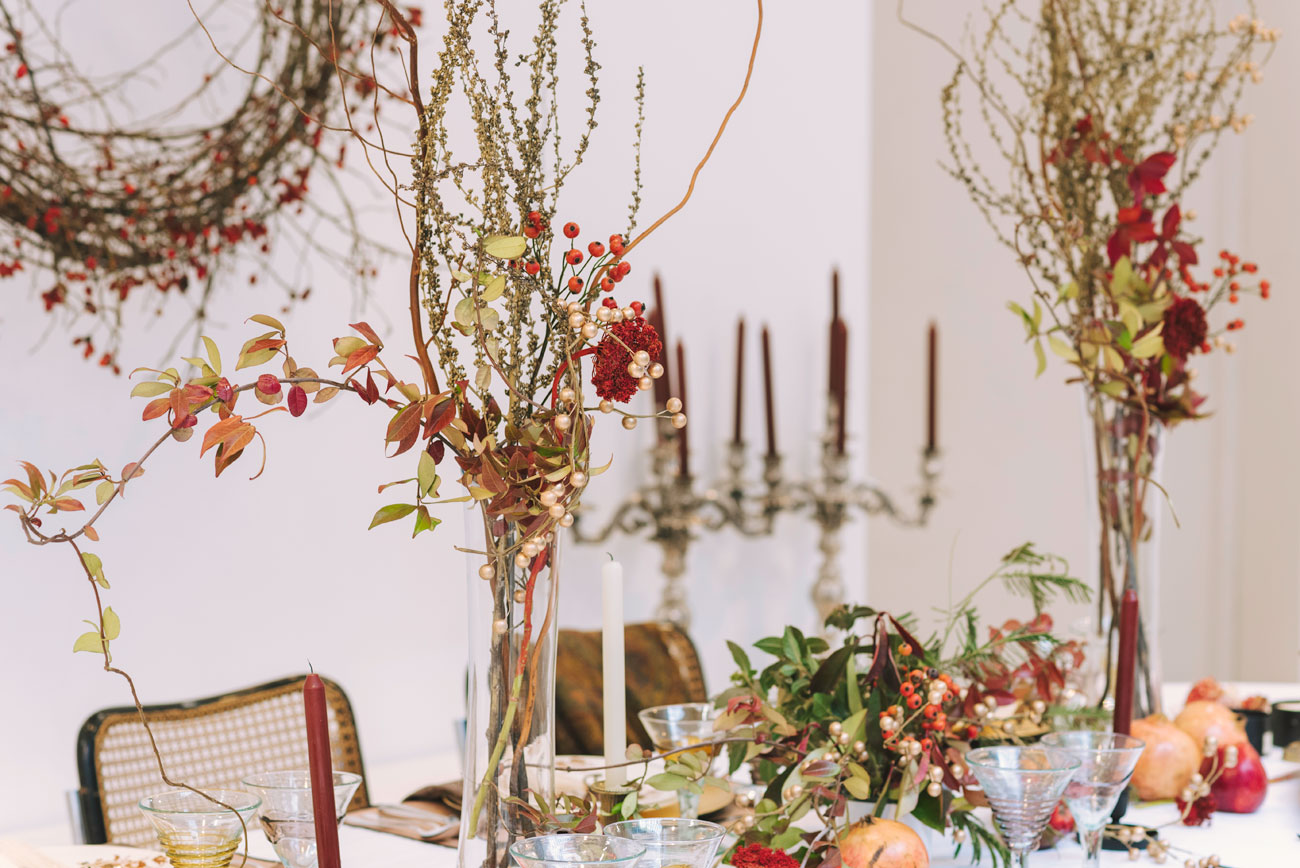
The selection of colours, textures and decorations can be a perfect exercise to put our creativity to the test.
This year Sylvia wanted to go for toasted colours such as brown and salmon, combined with black and white, which are less common on Christmas tables.
Rue Vintage and Isita Home collaborated with them, as well as using familiar pieces.

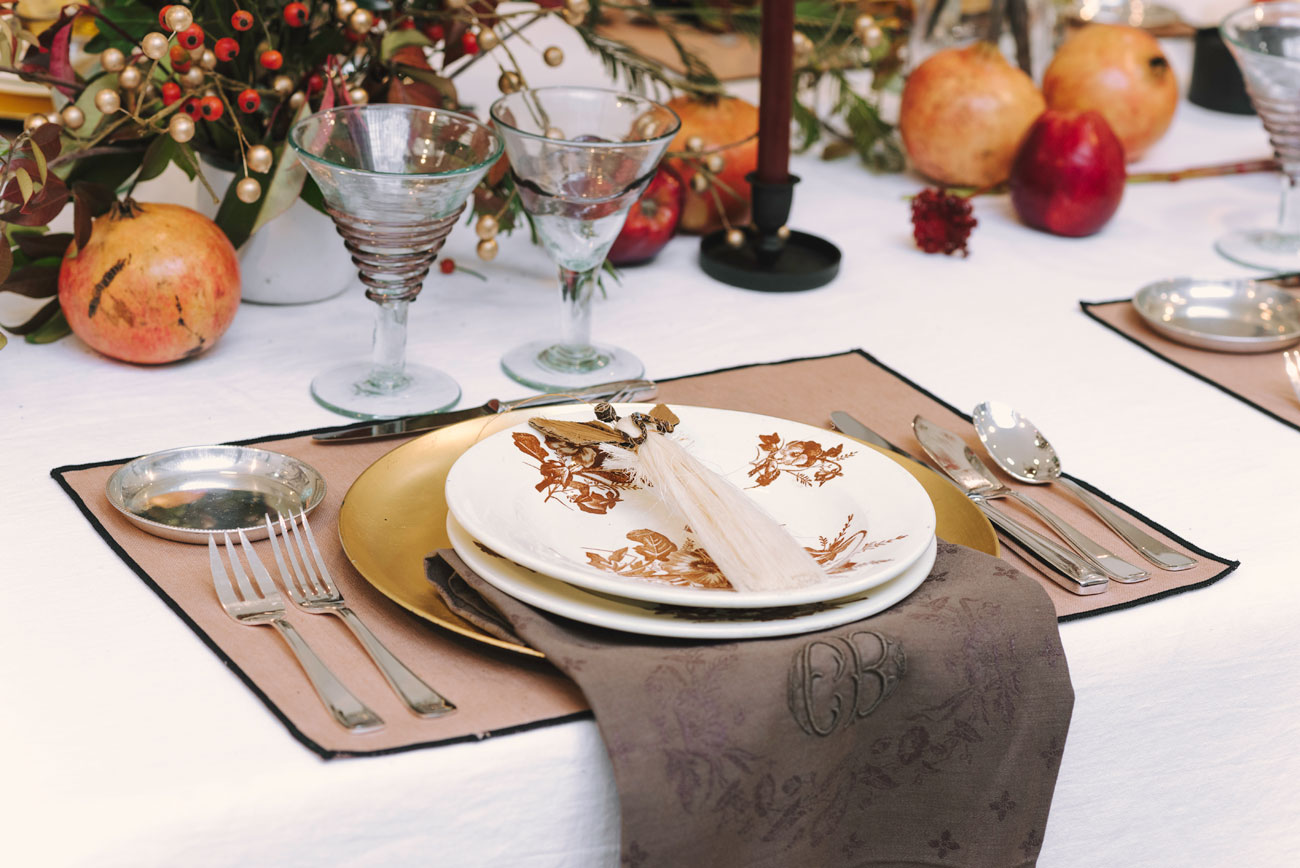
For the table linen, I worked as if it were a blank canvas, I started by creating a collage by superimposing several layers, with different touches of colour, seeking to give consistency to the table. As a base, I chose a 100% white washed linen tablecloth with a black border, and an exceptional texture. Subsequently, I added some cimarron-coloured linen placemats with black embroidery, which add an elegant touch. As for the napkins, I opted for a set of delicately embroidered chocolate brown damask thread. The Argenté Art Déco metal cutlery seemed to me to be the ideal complement to this composition.
The incorporation of the silver colour of the cutlery suggested to me to add some element that would contrast with the browns and salmon, so I opted for some golden underplates, accompanied by some silver leaf plates, of family origin.
The ensemble created so far required original and different glassware such as the blown glass goblets made in Mallorca by Isita Home. They have been handmade for more than eight generations, with a technique that dates back to the 2nd century BC, which I decided to accompany with some 19th century bronze candlesticks.
As a decorative detail, to give the final touch to the dishes, I loved the Kinyarwanda Angels, handmade in Rwanda with palm fibre and bark materials.
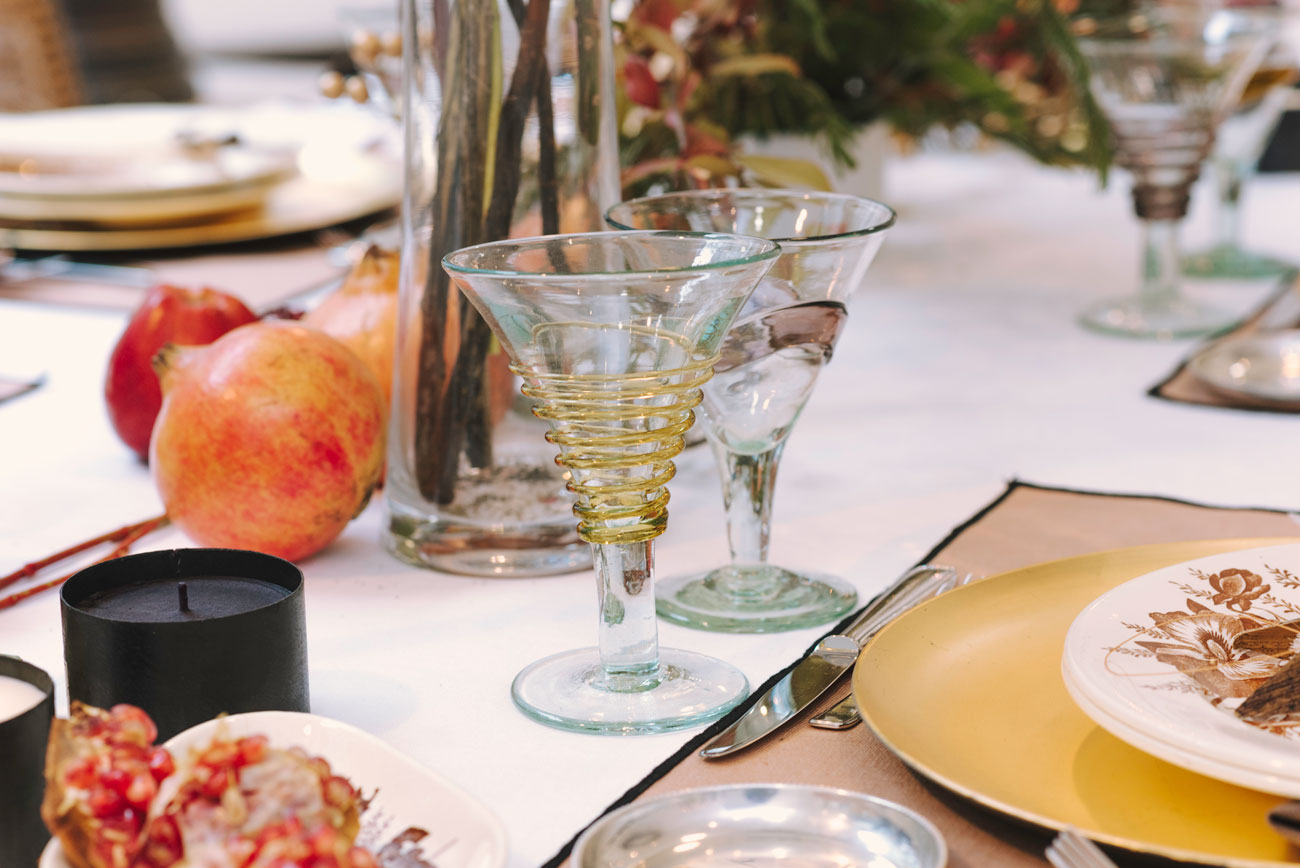
I decided to give life and movement to the table by creating volumes with different heights, thanks to tall glass vases in which cut plants from my garden were placed and complemented by fruits such as apples and pomegranates, red flowers and branches from the florist Margarita se llama mi amor; autumnal colours that harmonise perfectly with the rest of the elements. Pomegranates have been associated throughout history with special powers. The Babylonian soldiers considered them an essential ingredient for winning battles, synonymous with vigour for Greek brides, prosperity for the Chinese, fertility for the Jews, fecundity for the Christians and paradise for the Arabs. A symbol of love, fertility and abundance that could not be missing from our table.
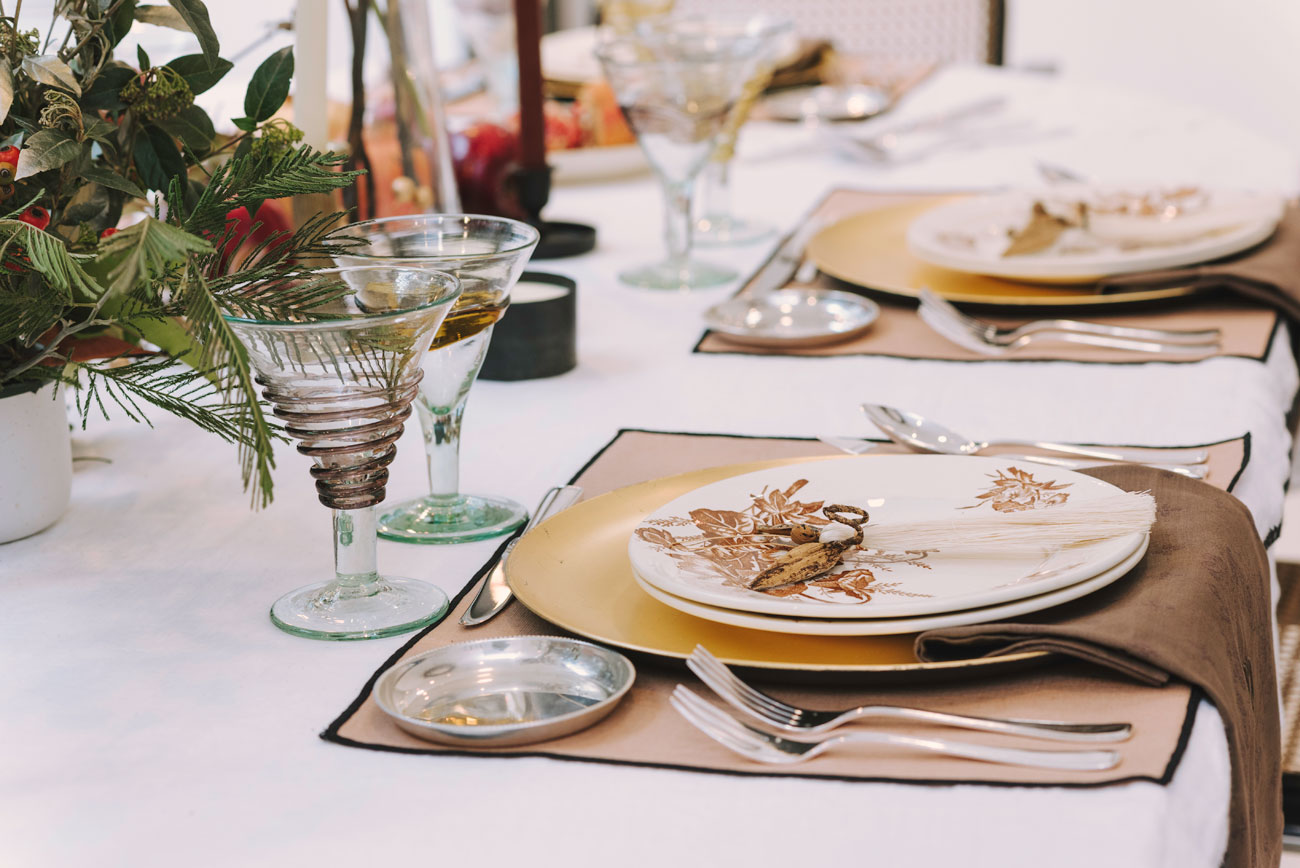
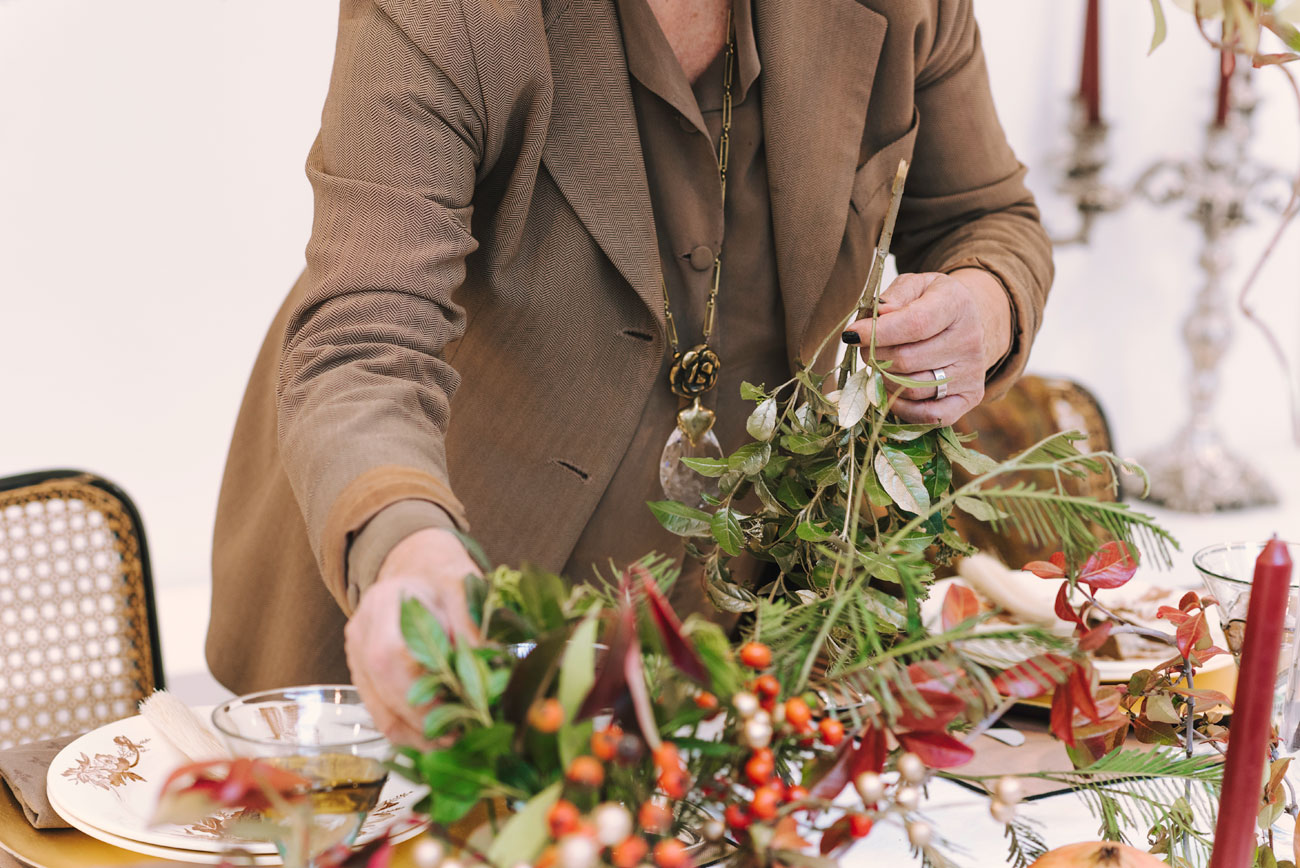
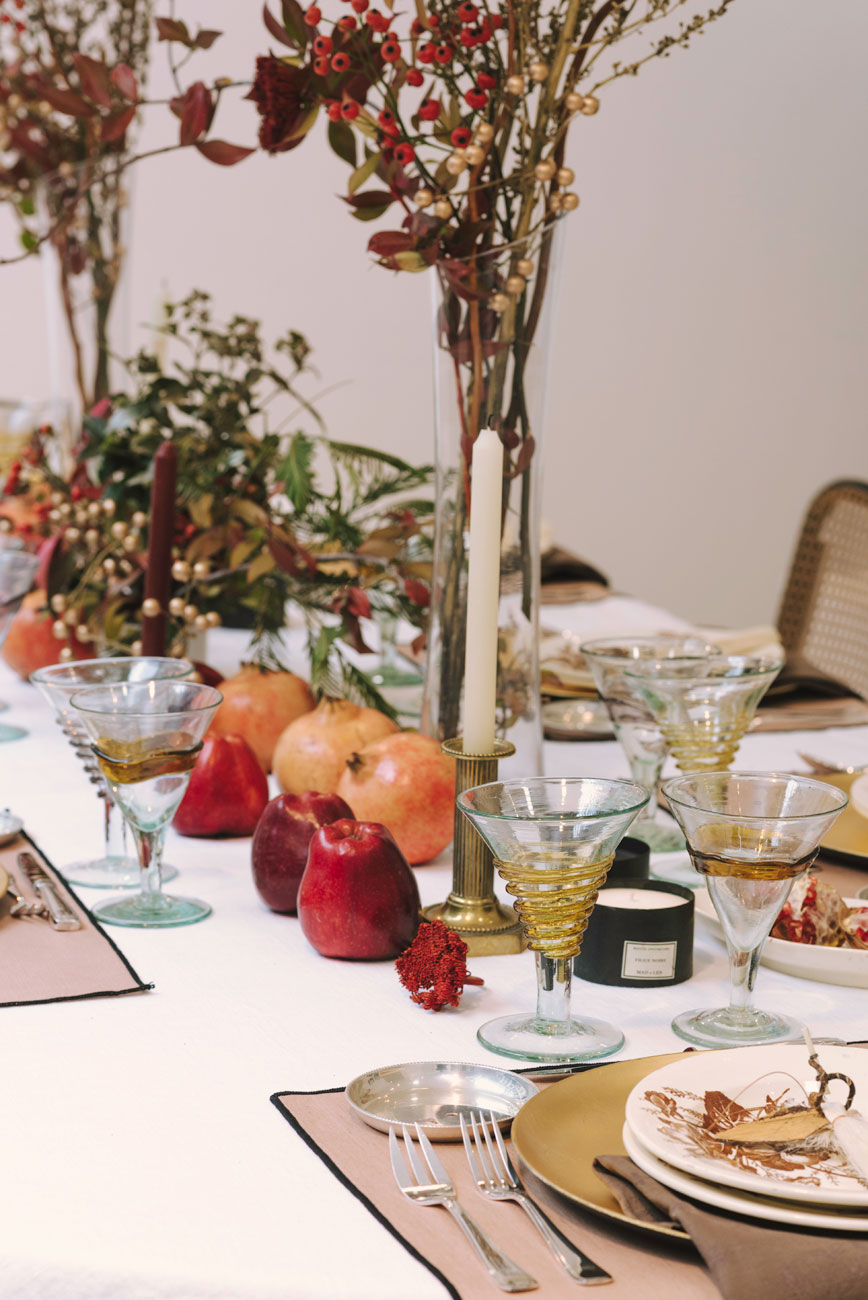

As decorations, we opted especially for many candles, playing with different heights and combining white and burgundy colours, with others in black laminated iron jars with handmade aromatic candles in black and white. I was very struck by their experimental fragrances that remind us of nature. The brand is called Mad et Len. The Alps in the south of France serve as the main source of inspiration for their creations with seasonal ingredients and small-scale production.
To create contrast I also brought some of my mother’s antique silver candlesticks, which give it a theatrical and sophisticated air,” says Sylvia Girón.
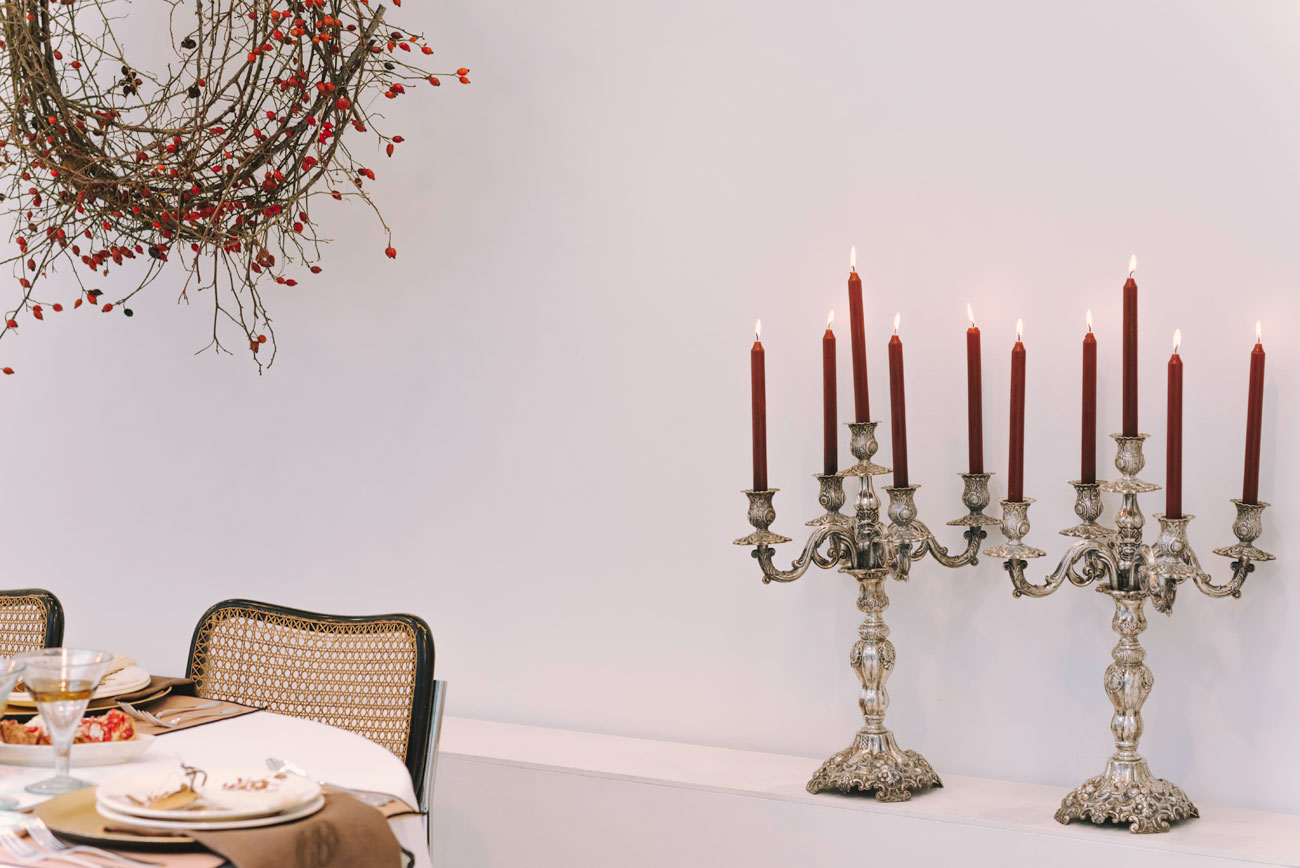
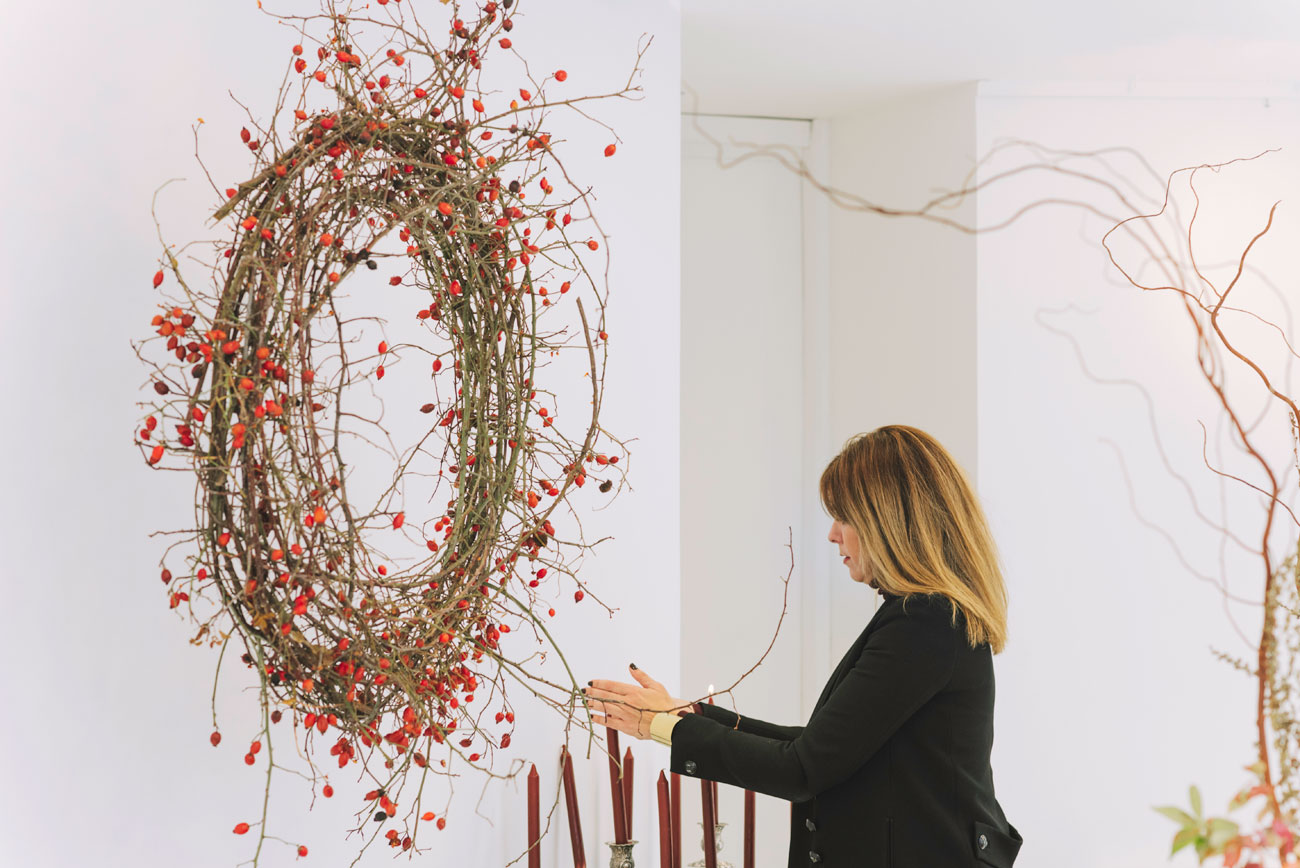
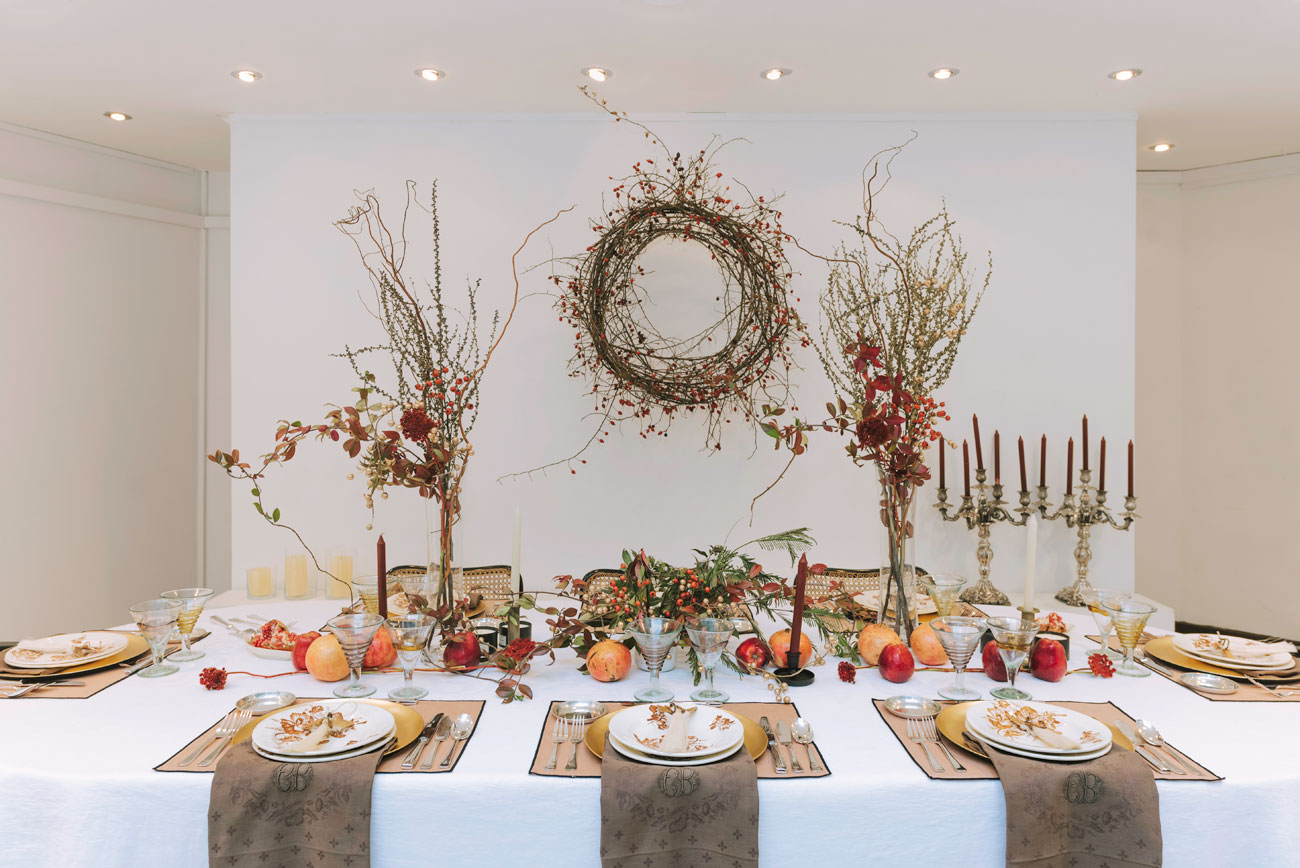
It has been a pleasure to create this table with which we have celebrated Christmas as a team, where we also had a little surprise gift that we added to our table. As we already mentioned, we love candles and these Loewe candles that you can see below are a delight.
We hope you enjoy your tables as much as we do!
Merry Christmas!
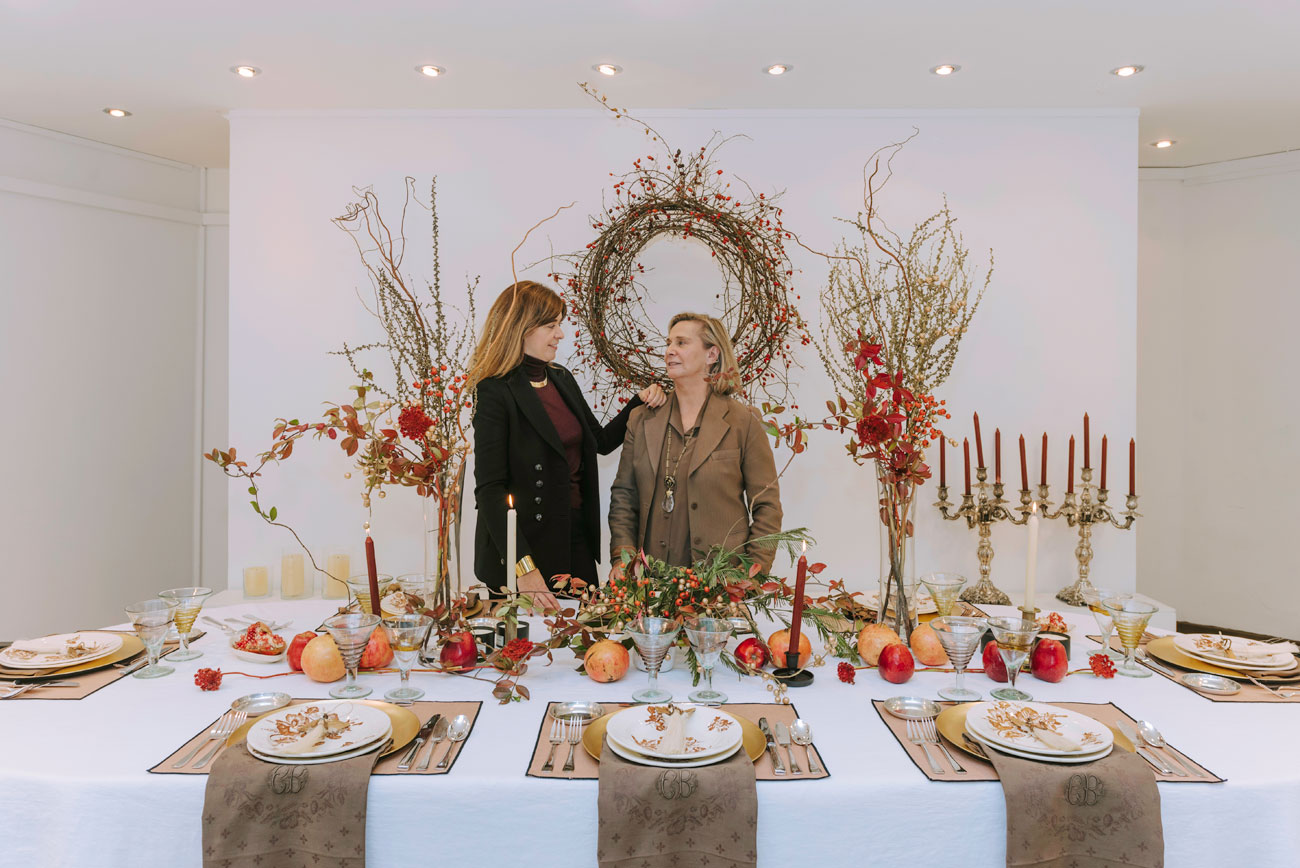
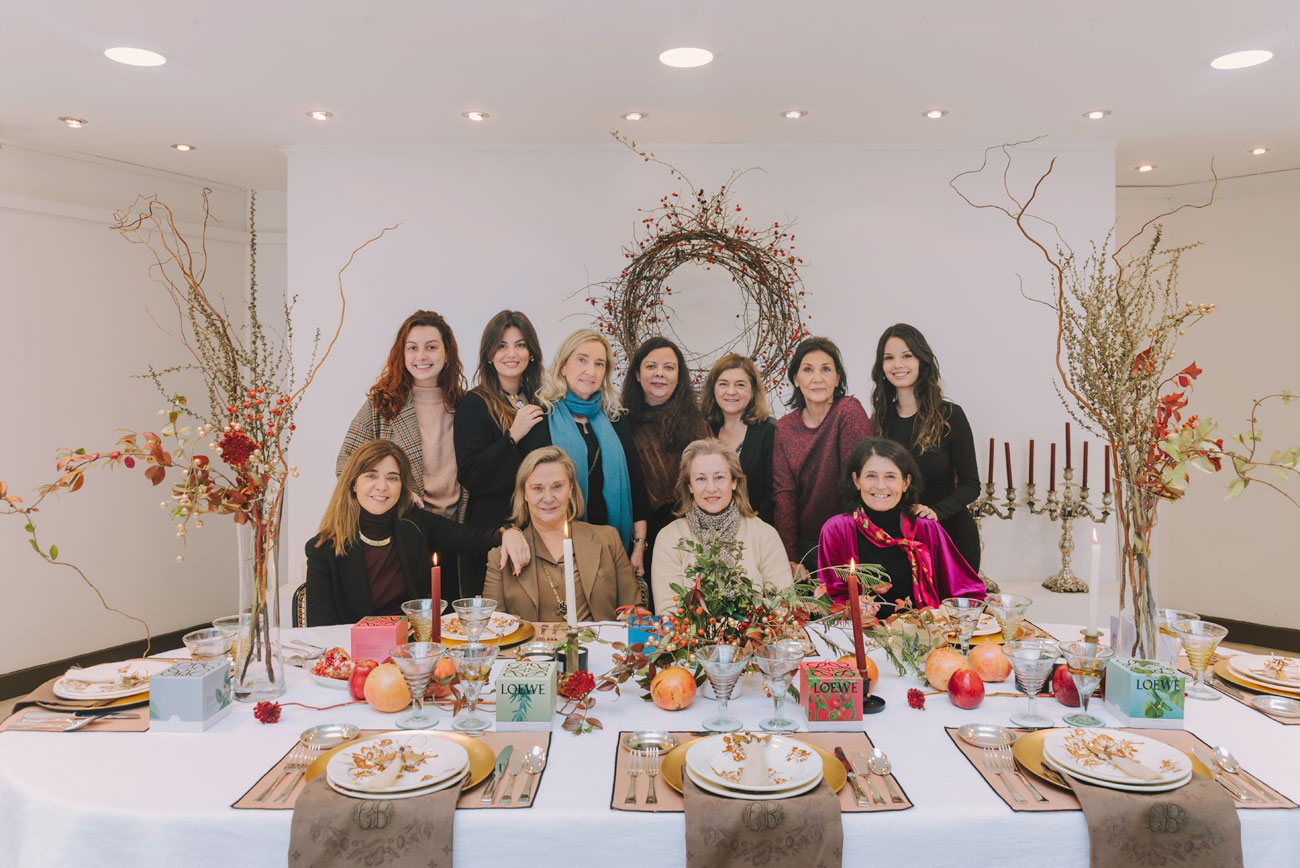

- Earthenware tableware “Terre de Fer” from the 1940s, with floral pattern in brown.
- Tablecloth made of 100% washed linen, sustainably produced, white with black border.
- Cimarron coloured linen placemats with black embroidered piping, elegant and practical at the same time, thanks to their special treatment that makes them waterproof and much more resistant to stains.
- Chocolate brown damask napkins “CB”. The damask linen napkins belonged to the household linen of the turn of the century between the 1920s and 1940s. Today Rue Vintage has recovered them giving them a new life with natural dyes to bring colour and warmth to the table.
- Argenté Art Déco metal cutlery.
- Angel by Kinyarwanda. Angels handmade in Rwanda with natural materials in palm fibre and bark.
- 19th century bronze candlesticks.
- White and burgundy candles in different heights.
- Black laminated iron jars with handcrafted black and white scented candles. Brand Mad et Len.
Blown glass goblets made in Mallorca. Handmade for more than eight generations, with a technique that dates back to the 2nd century BC.
Leticia Rodríguez de la Fuente:
Indoor (wreath) and outdoor flower arrangements
Red flowers and branches
Candles


